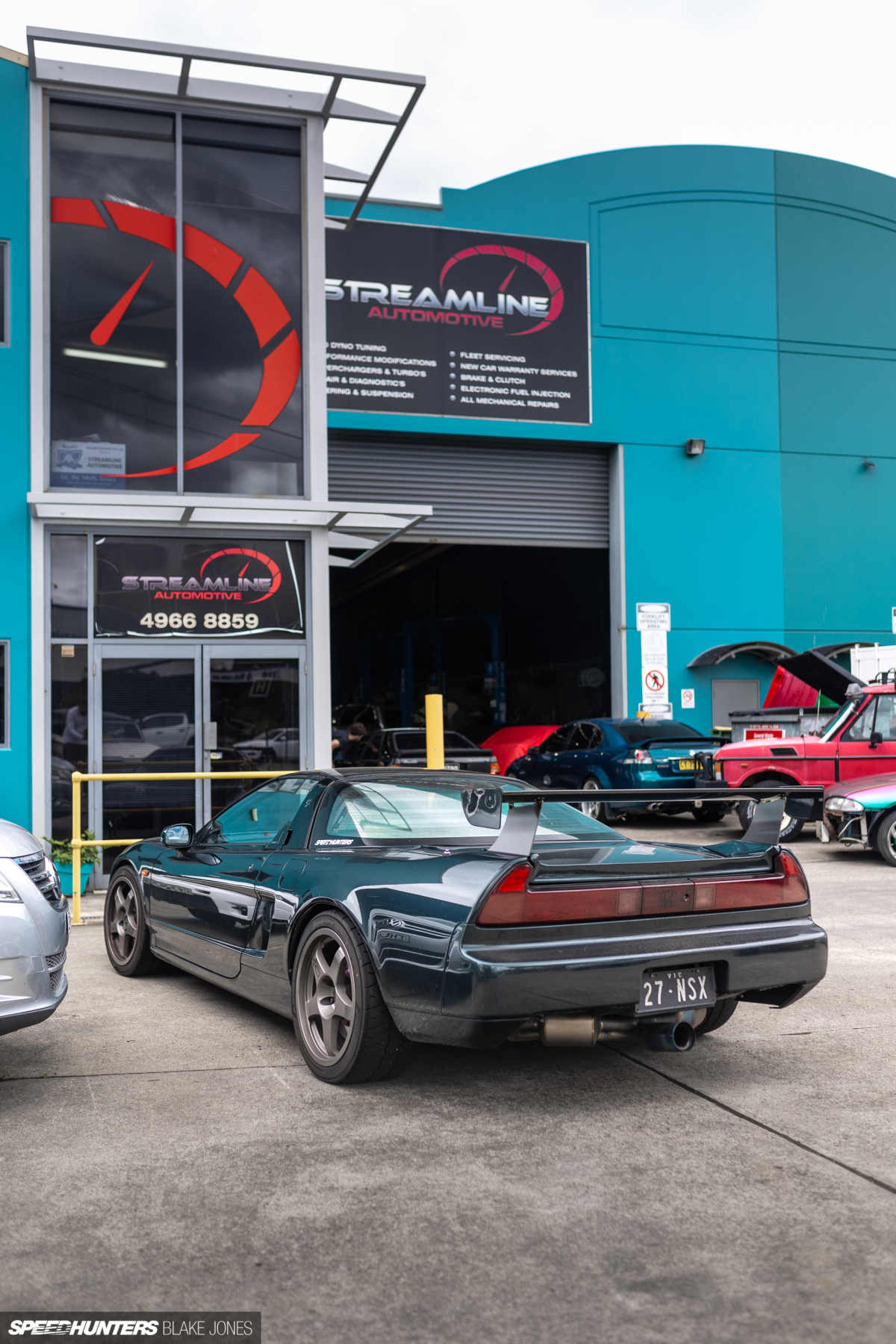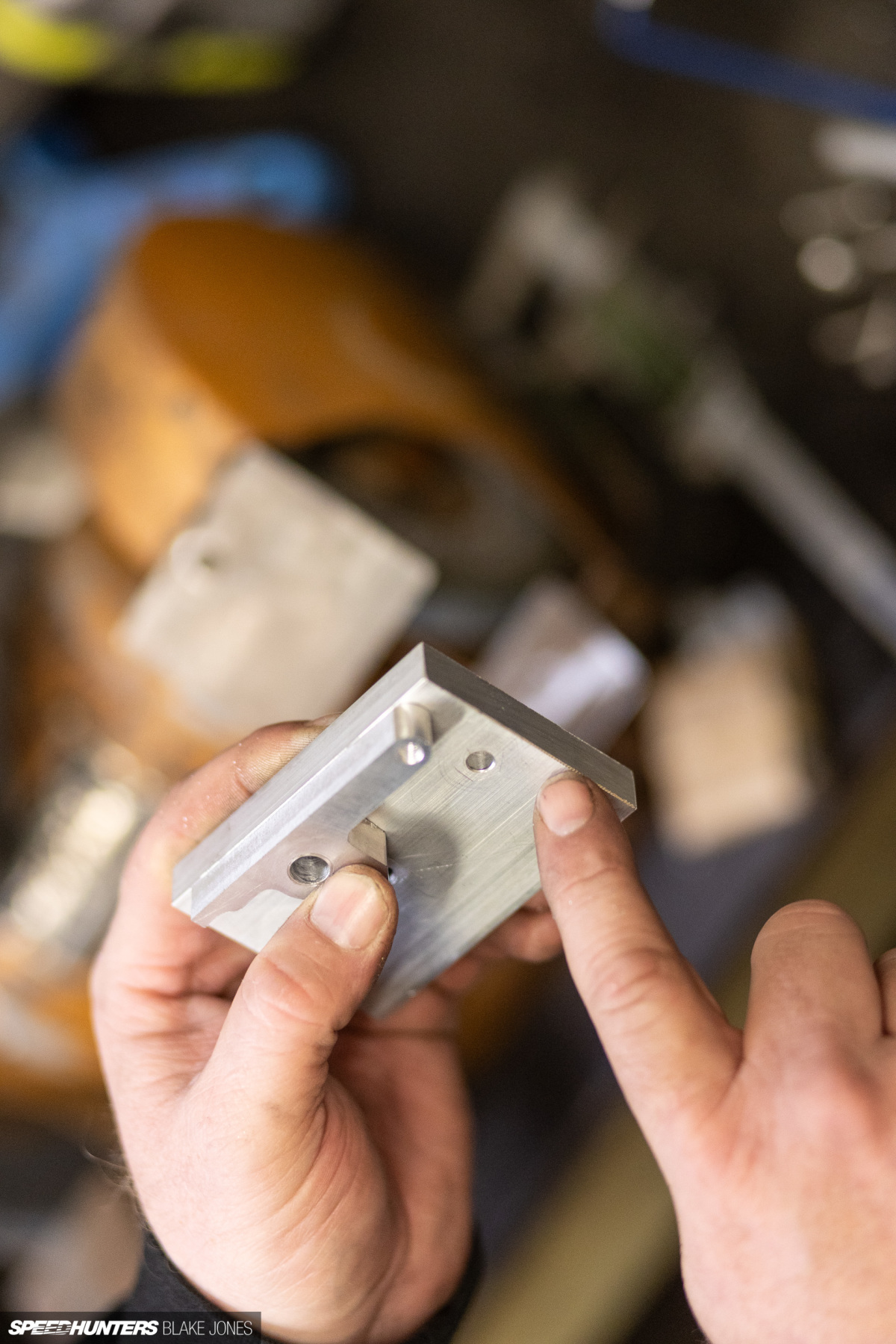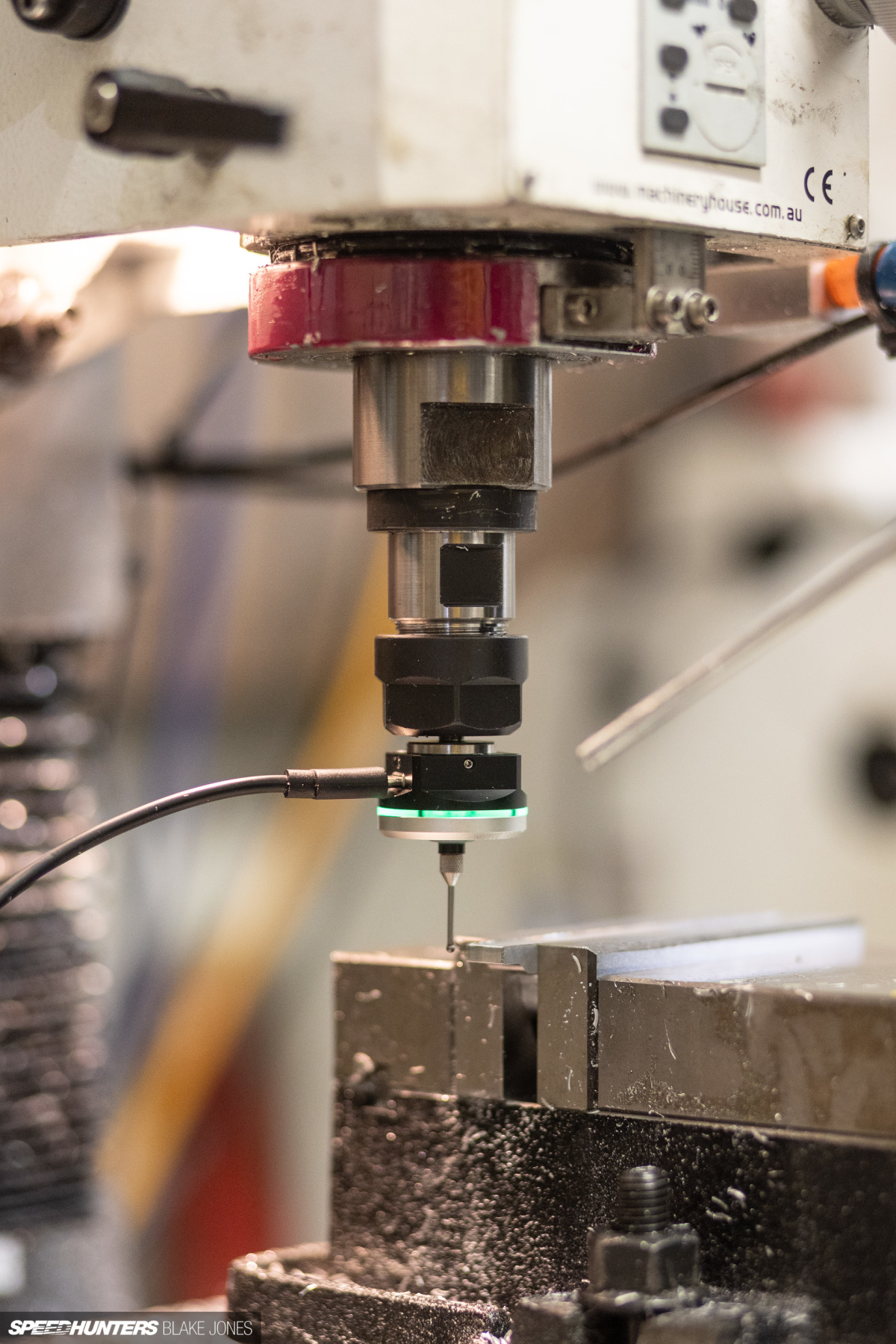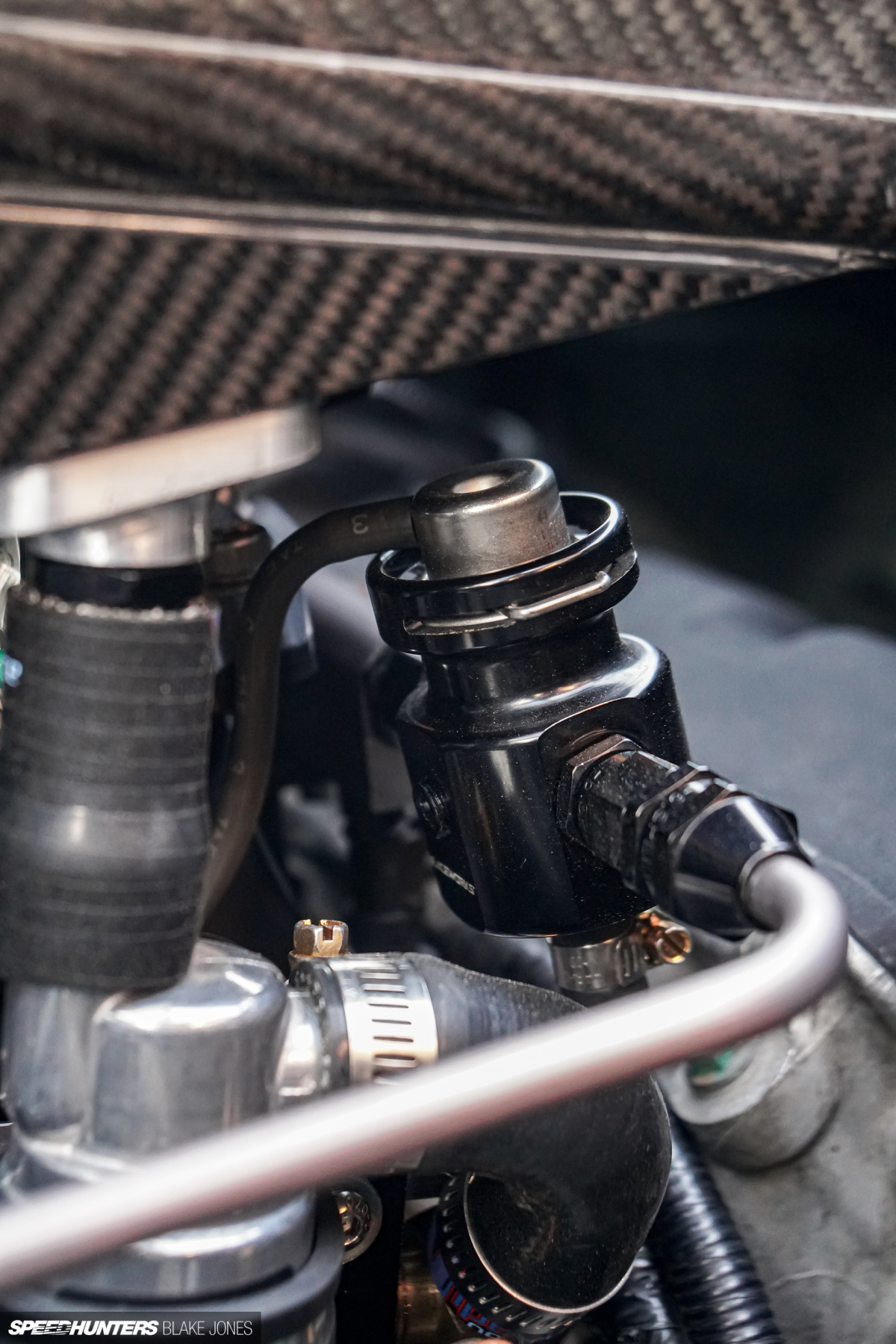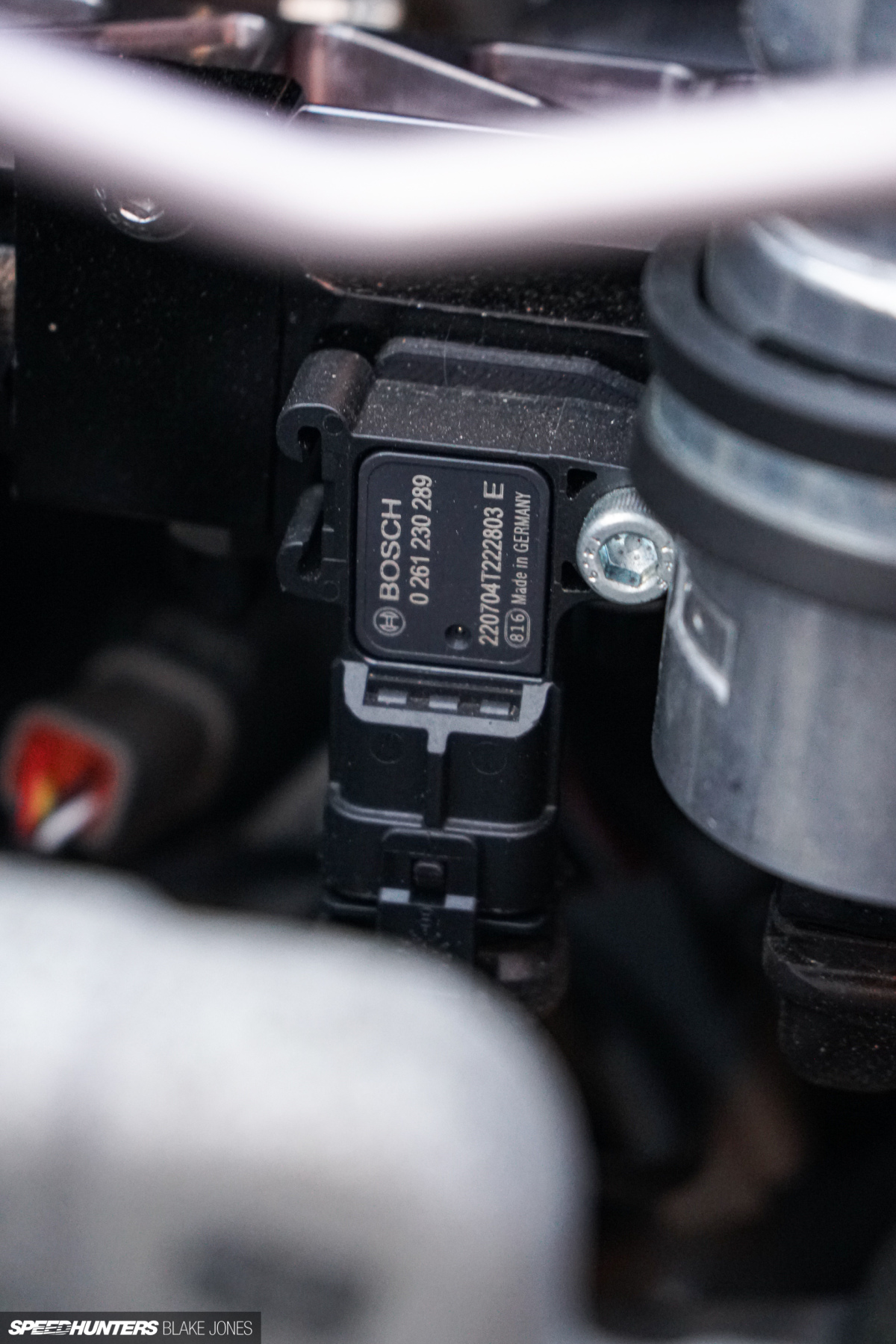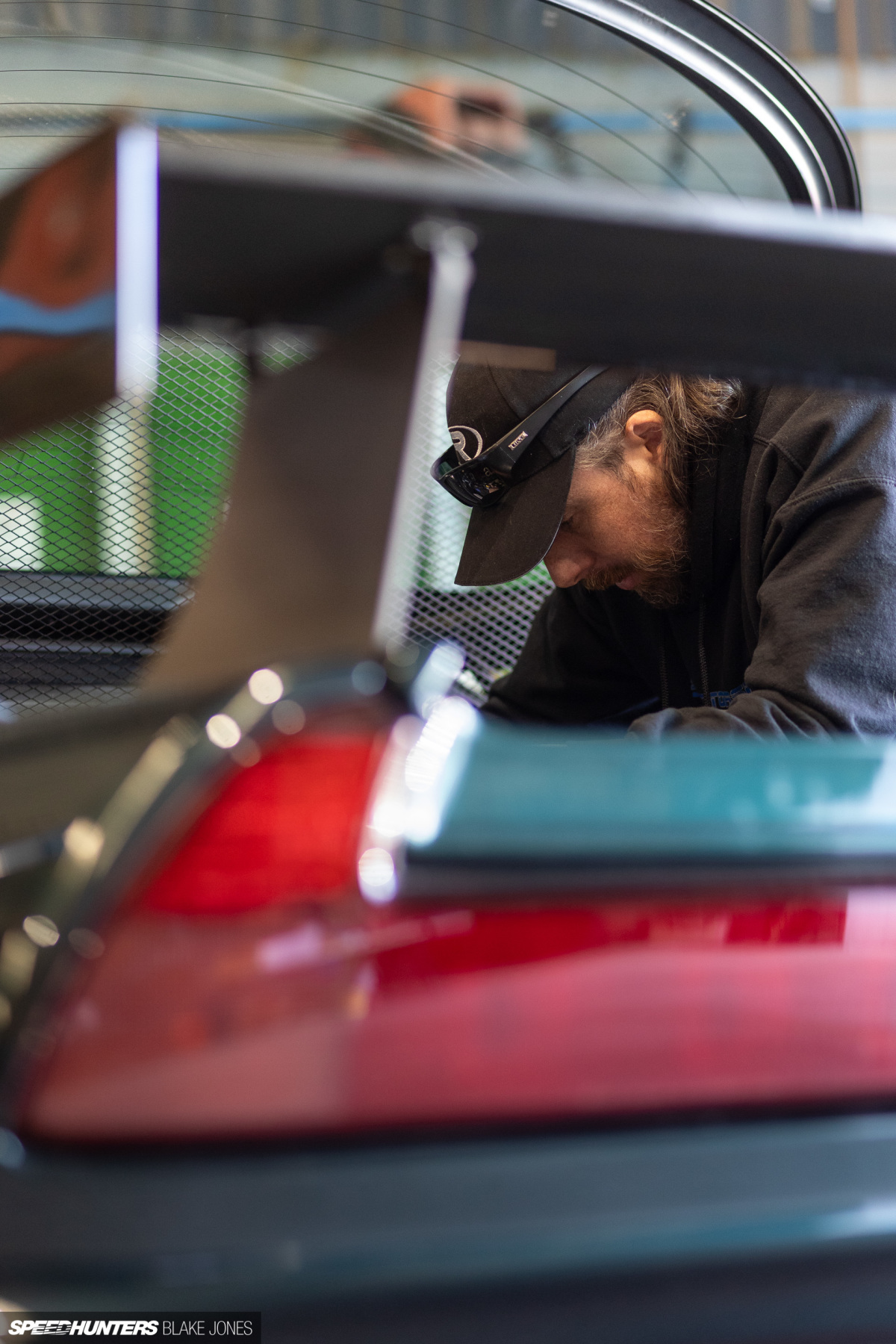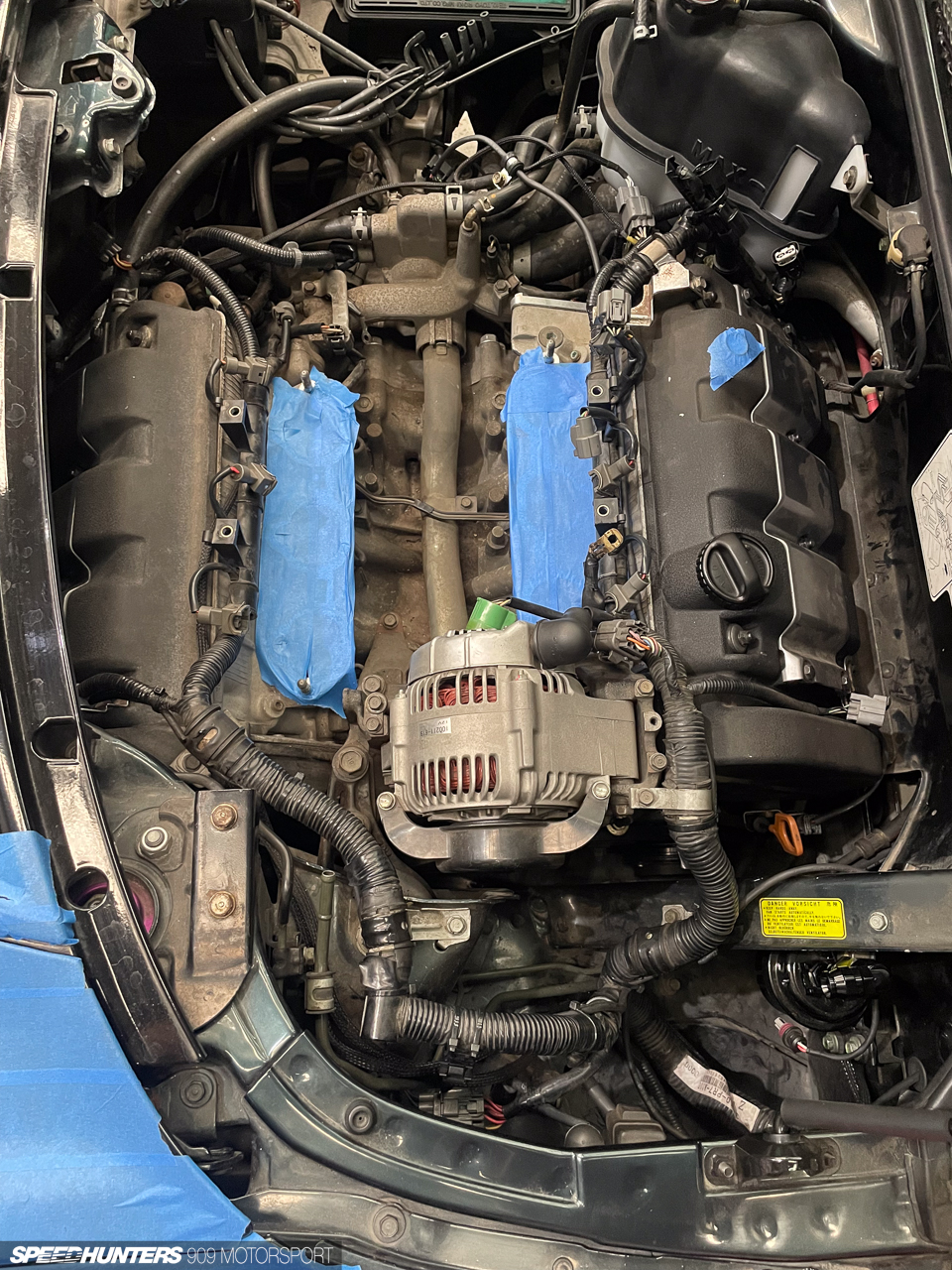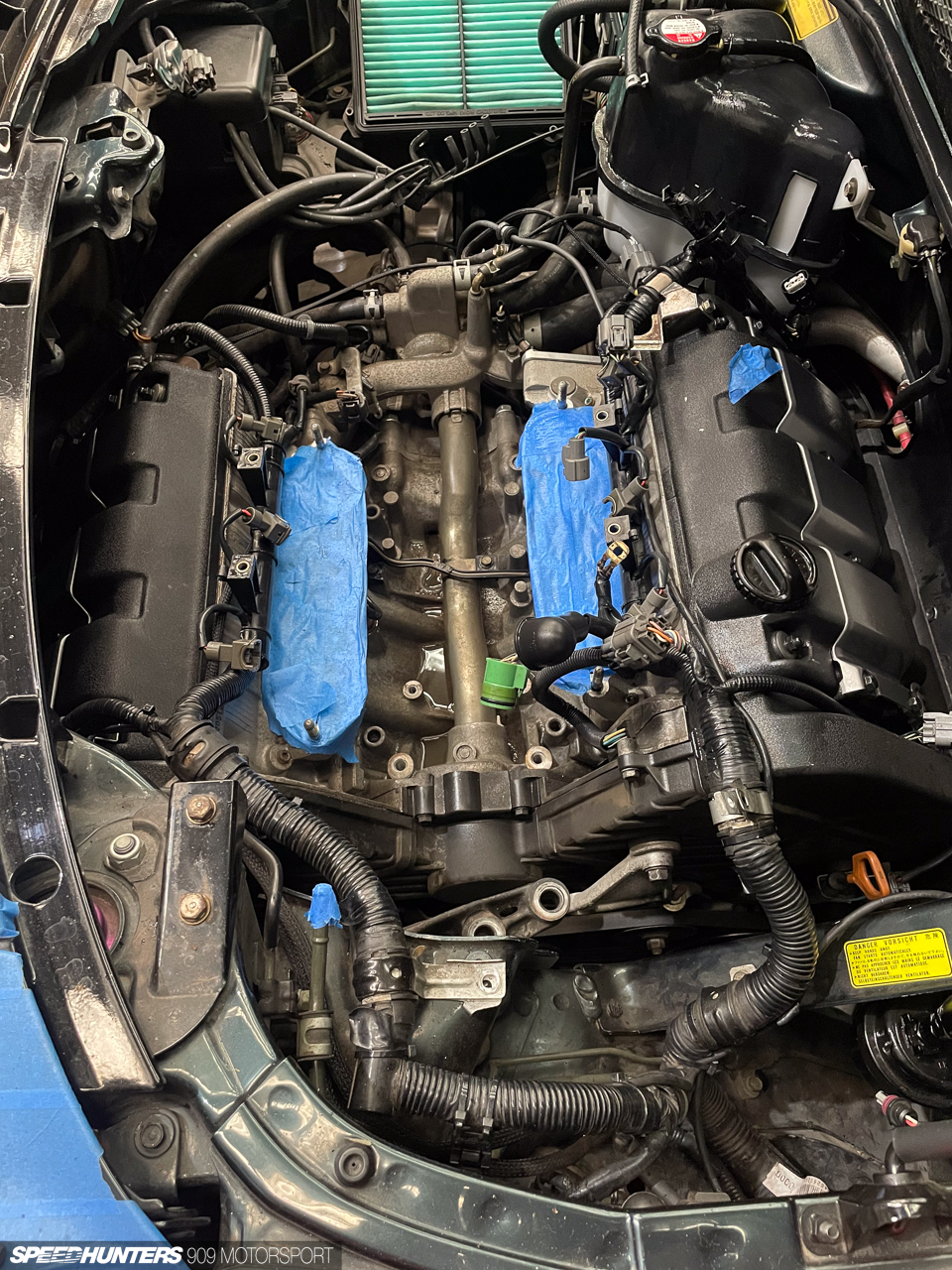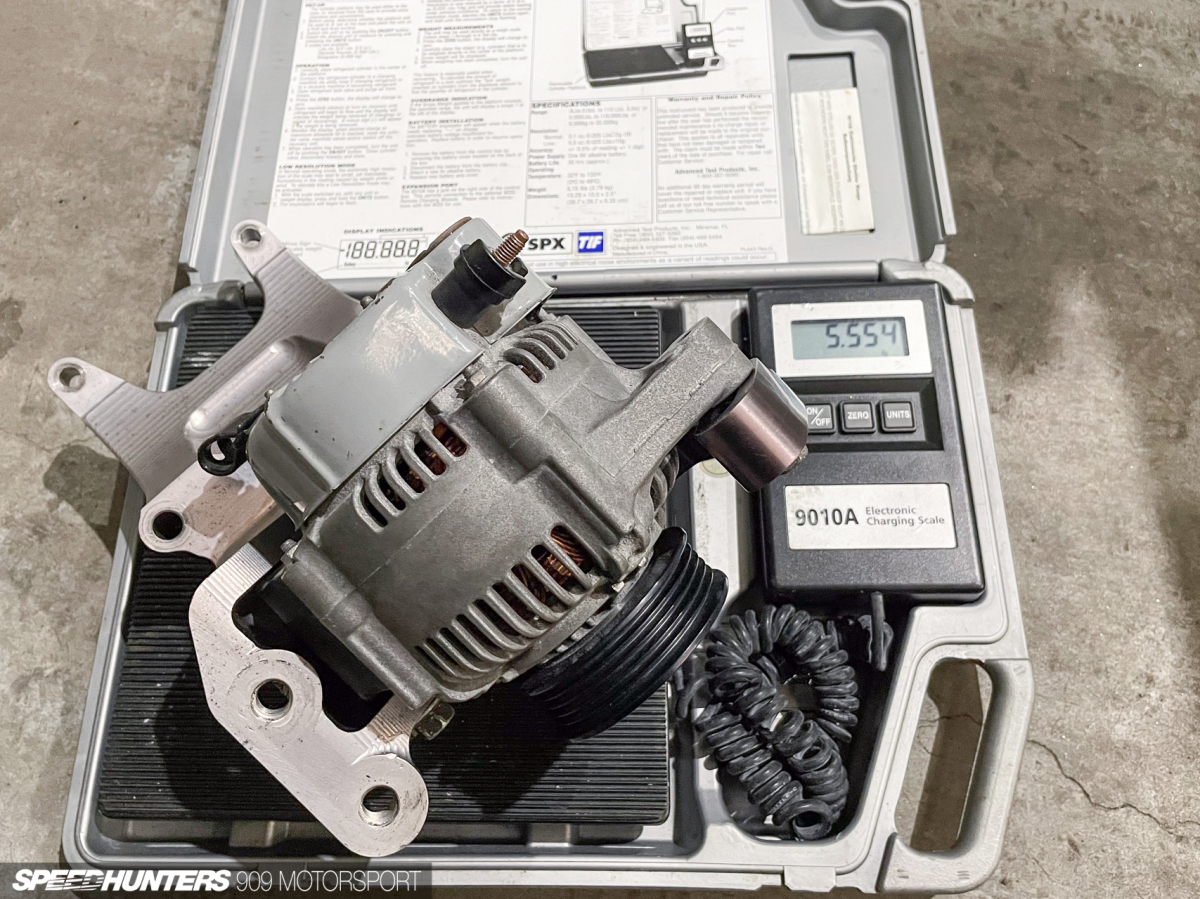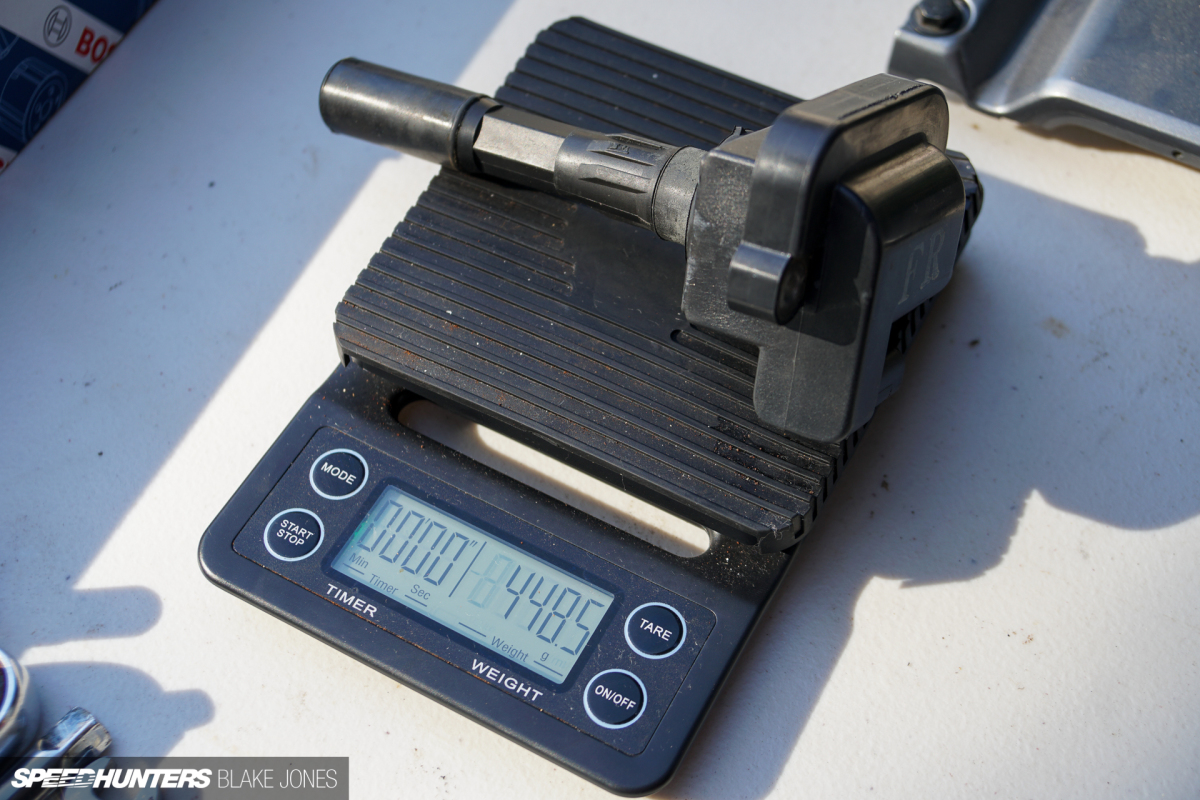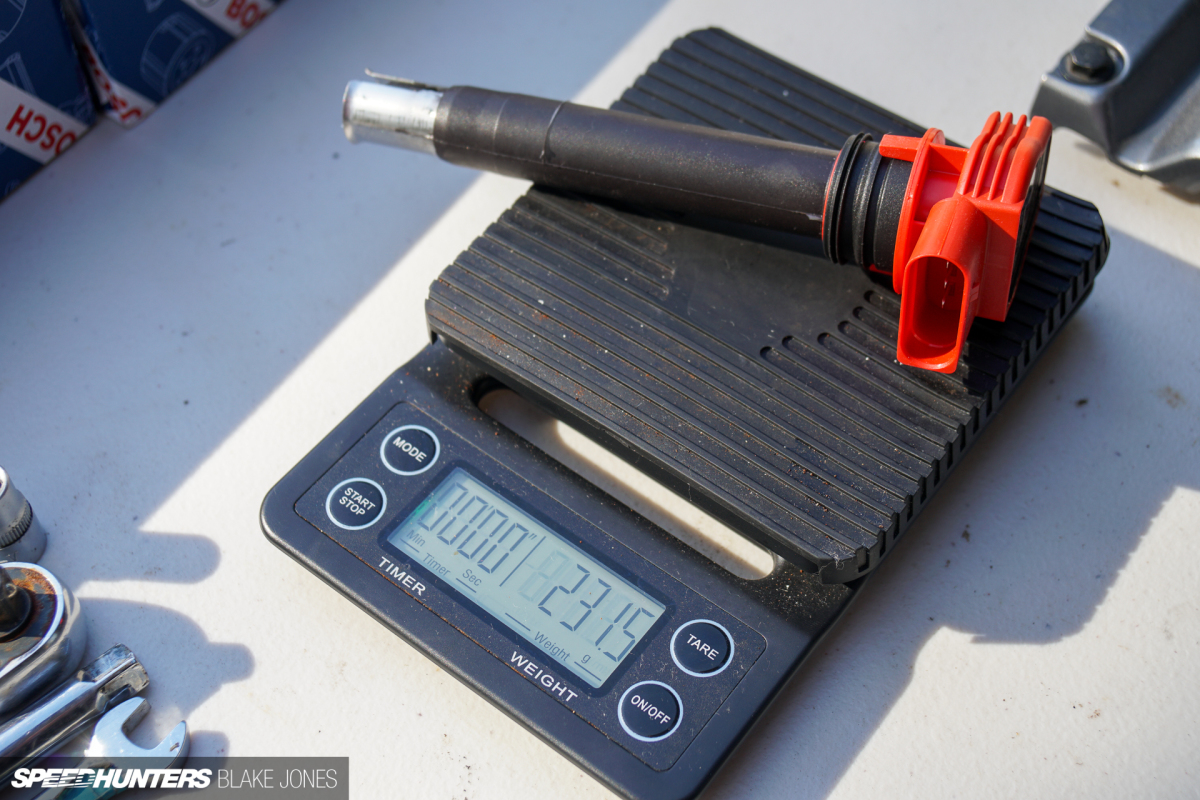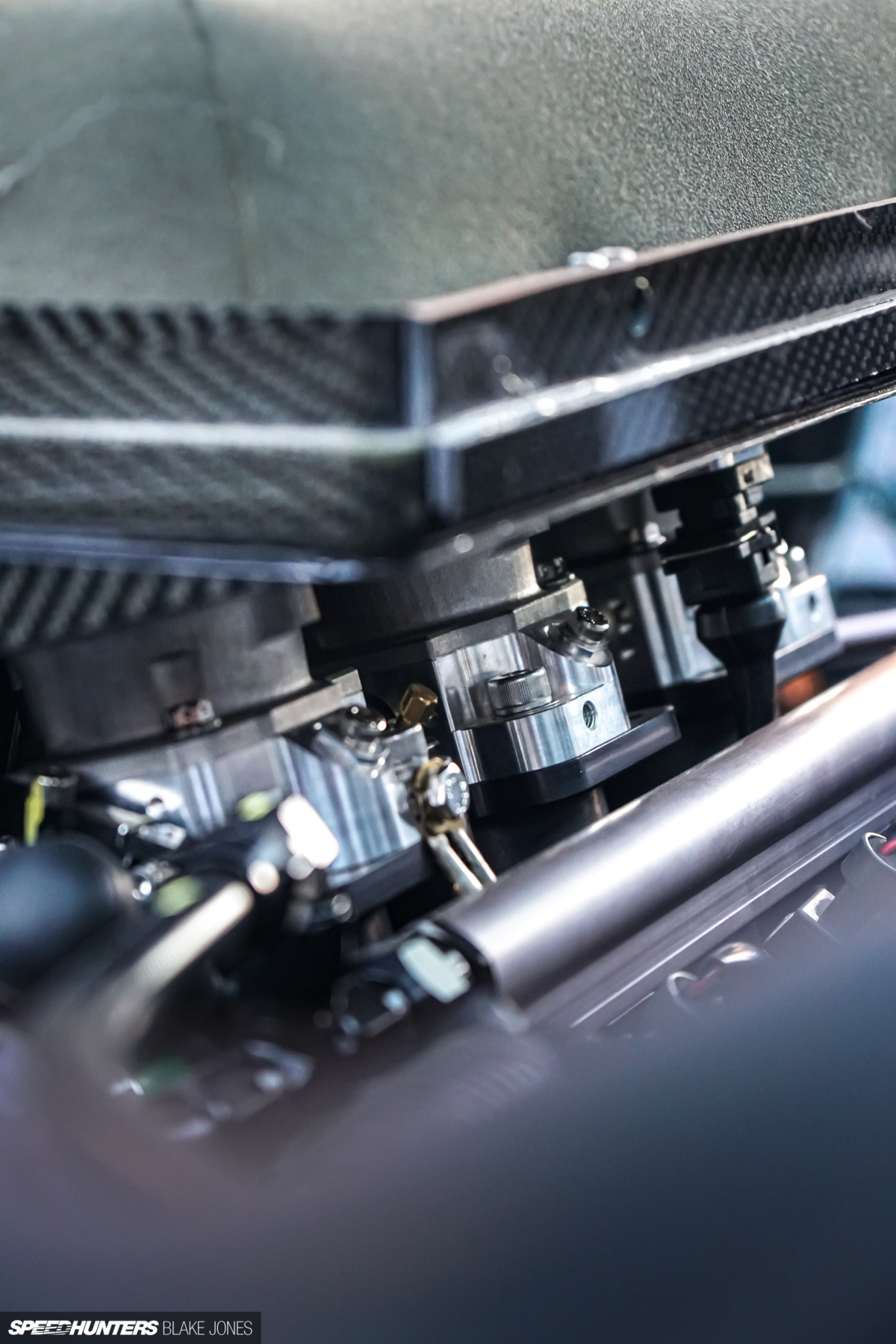What can we love a lot about naturally aspirated engines? Maybe the musicality, or the responsiveness, or the mix of each that creates an emotionally rewarding expertise with each stab on the throttle pedal. Nicely, no matter underpins that attraction, I can say for certain that nothing turns it as much as 11 fairly like a set of particular person throttle our bodies.
Enter Challenge NSX. Already offering a symphony of encompass sound from the mid-mounted engine and making virtually sufficient energy to fulfill – the scene was set. ITBs. Extra energy. Extra sound. Much less weight. Extra… mechanical intercourse attraction. I need it. Nay, I want it!
For these long-term followers of the challenge – thanks in your endurance – you may keep in mind the ‘Stage 2′ goal of 300 crank horsepower outlined all the way in which again in 2019. Six years in the past, actually? Sure, and it’s time to lastly tick that field.
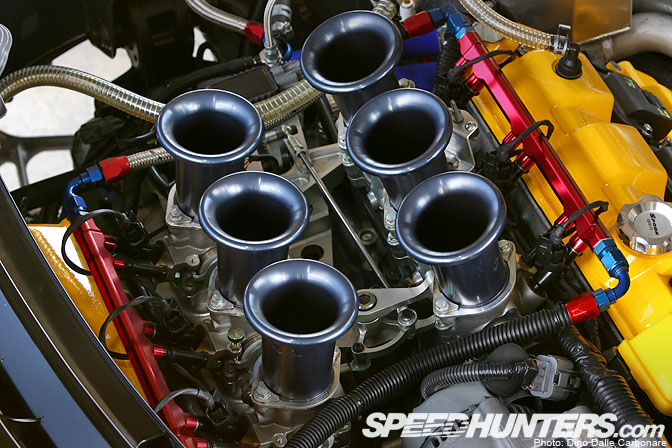
Earlier than deciding to go the ITB route, I used to be already conscious of some kits accessible for the NSX’S C30A 3.0L DOHC VTEC V6 engine. As with many aftermarket choices for the NSX, they’re principally costly and compromised. I wished to run drive-by-wire, and nothing was notably suited to that. Injector place was a very weak level, with most accessible options inserting them at angles perpendicular to the airflow, acceptable for high-RPM operation in a race automobile however eliminating the good thing about correct spray focusing on at decrease consumption air speeds. Compromising the NSX’s well-known low-speed manners on this manner was unacceptable, so I began to mess around with a bespoke answer. I had some CAD expertise from my 3D printing escapades, how laborious might or not it’s?
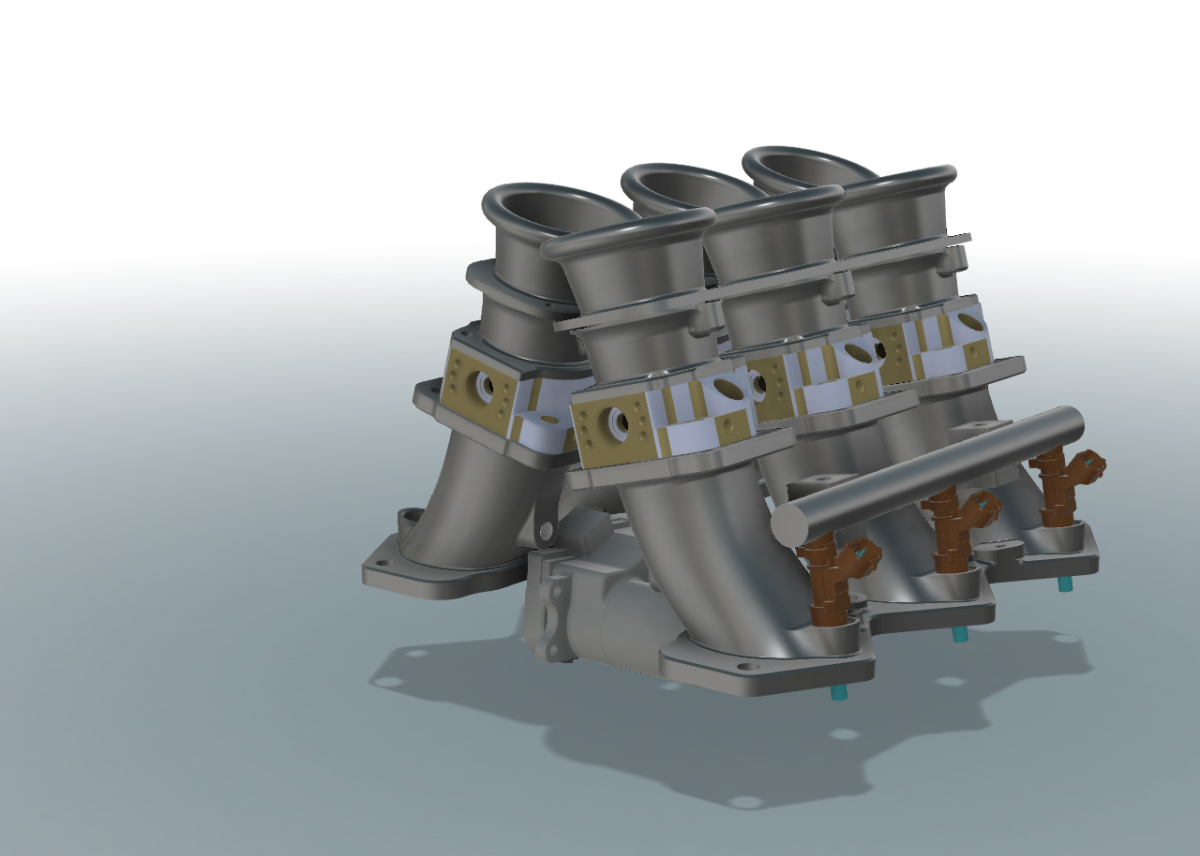
I quickly discovered – reasonably tough certainly. The advanced shapes required to match the angle and profile of the consumption ports had been a selected problem, numerous late nights had been spent with Fusion360 and YouTube open, studying on the job. Making errors, throwing all of it within the bin, and beginning once more. By the point I had one thing prepared for prototype manufacturing, I believe I used to be on to model 18… a prime instance of biting off greater than you may chew, however that’s additionally one of the simplest ways to speed up your studying.
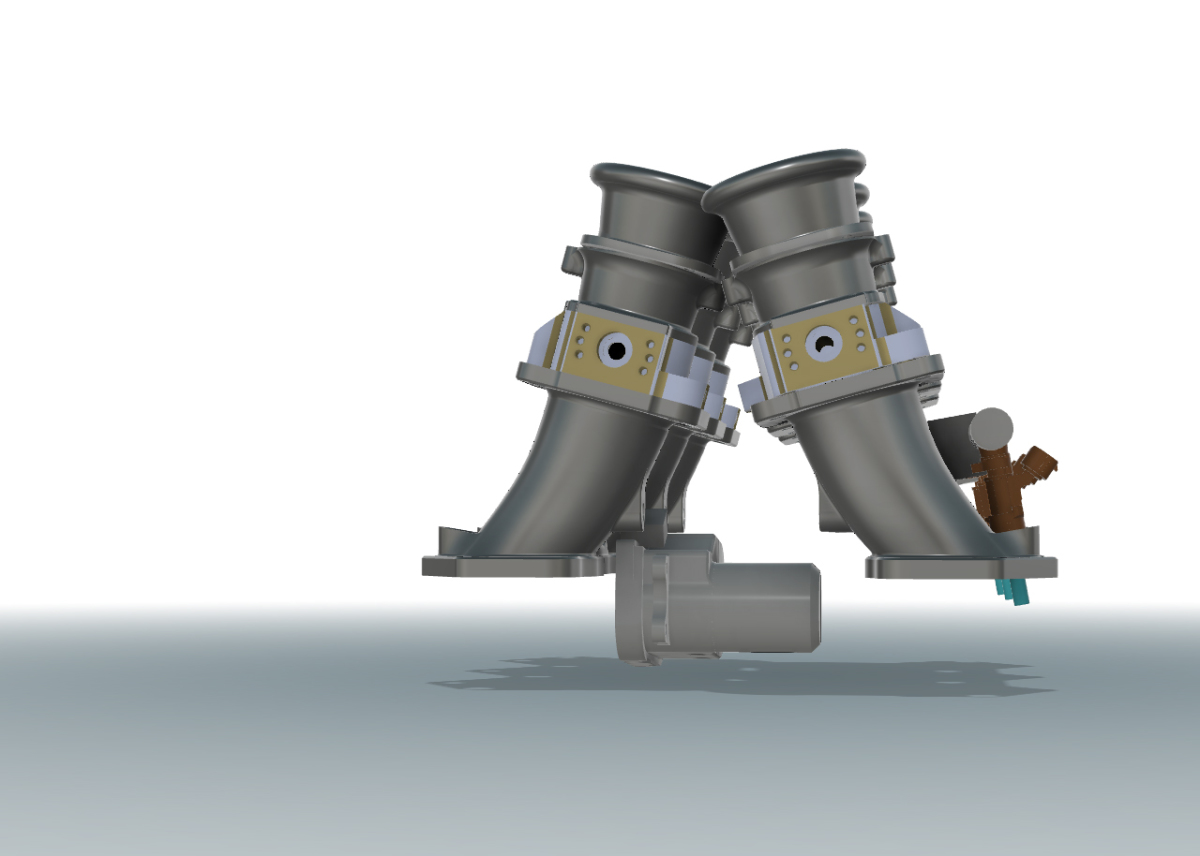
The important thing options – a runner profile 3D matched to the form and course of the consumption ports and a 48mm throttle physique, injector place an identical to manufacturing facility, together with angled mounting place, provision for the mounting of a central DBW throttle actuator, and angled runners to clear the alternator and mount. It was at this stage I additionally chosen another key parts from some nice Australian suppliers, specifically six 48mm throttle our bodies and related linkages from RHD Engineering, and a DBW throttle actuator from EFI {Hardware}. The mounting factors on my manifold design had been positioned to match.
Design To Manufacture
After just a few printed plastic iterations, it was prepared for the actual factor. I had at one stage thought of printing the ultimate product in a robust and heat-resistant carbon-filled nylon however was ultimately steered away from that by those that know higher – the chance of the manifold flexing/warping resulting from warmth/load and thus misaligning the throttles was substantial. As a substitute, I’d go for CNC-machined 6061 aluminium.
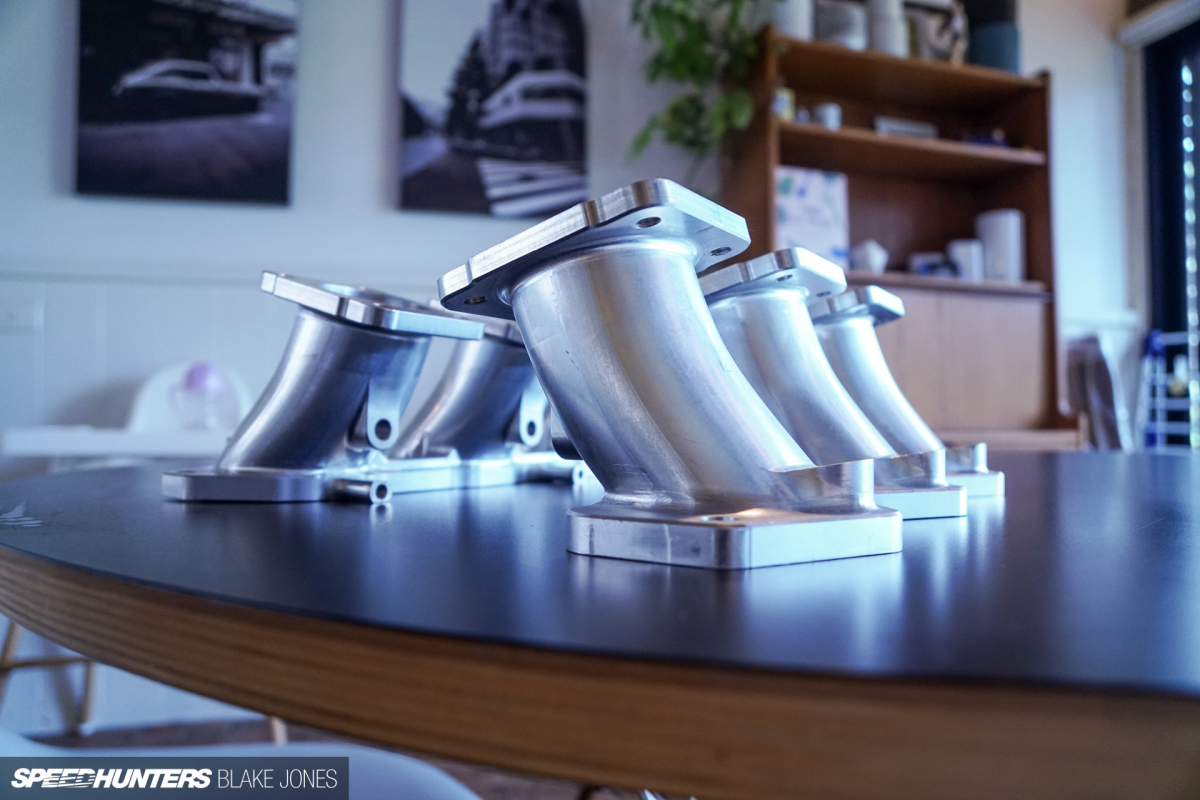
I shopped round for some quotes regionally and abroad, ultimately deciding on a producer primarily based in China. There have been just a few minor bumps via the method, however I can not fault the firm on its communication or responsiveness. I used to be despatched pictures at each stage of the manufacture and QC course of and would fortunately go this route once more.
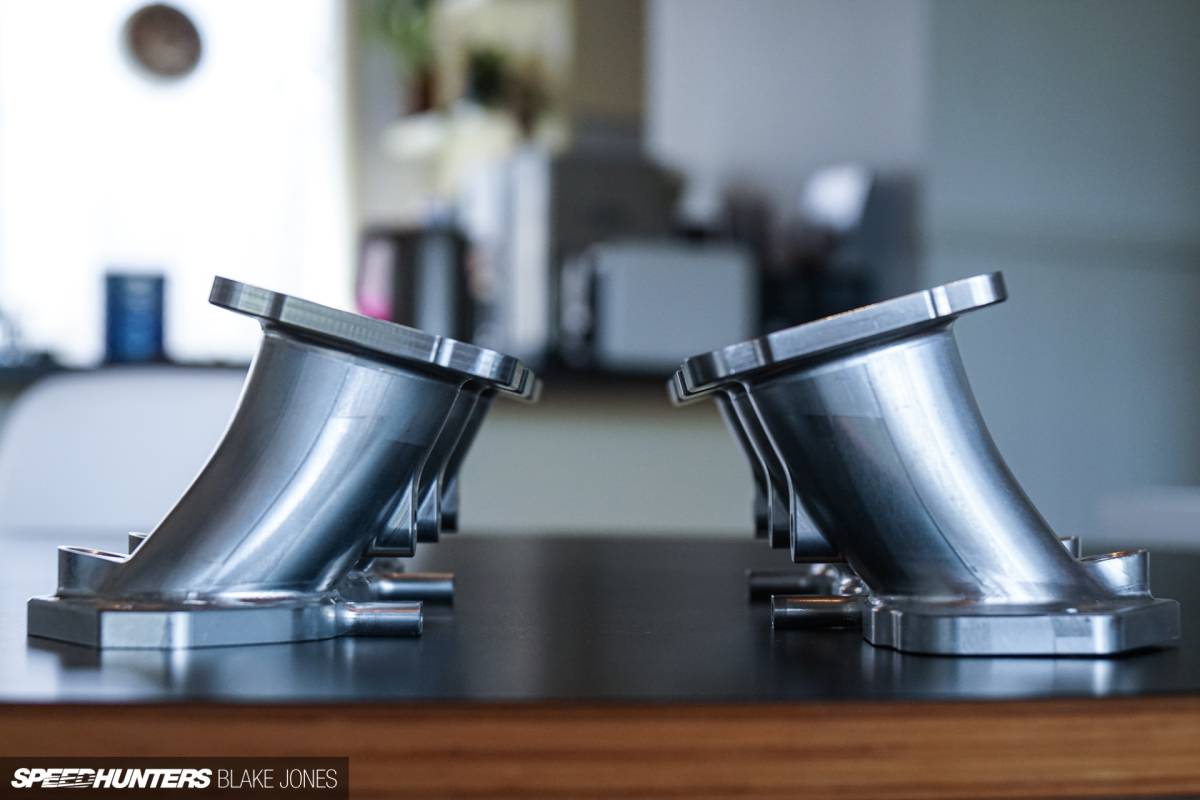
The price of this machining was substantial, a lot increased than I’d anticipated. The complexity of the half (and thus the machining time and effort required) was the wrongdoer – and one other lesson realized: designing with the manufacturing methodology in thoughts is essential. Additive manufacturing had spoiled me – no instrument paths to think about on the printer.
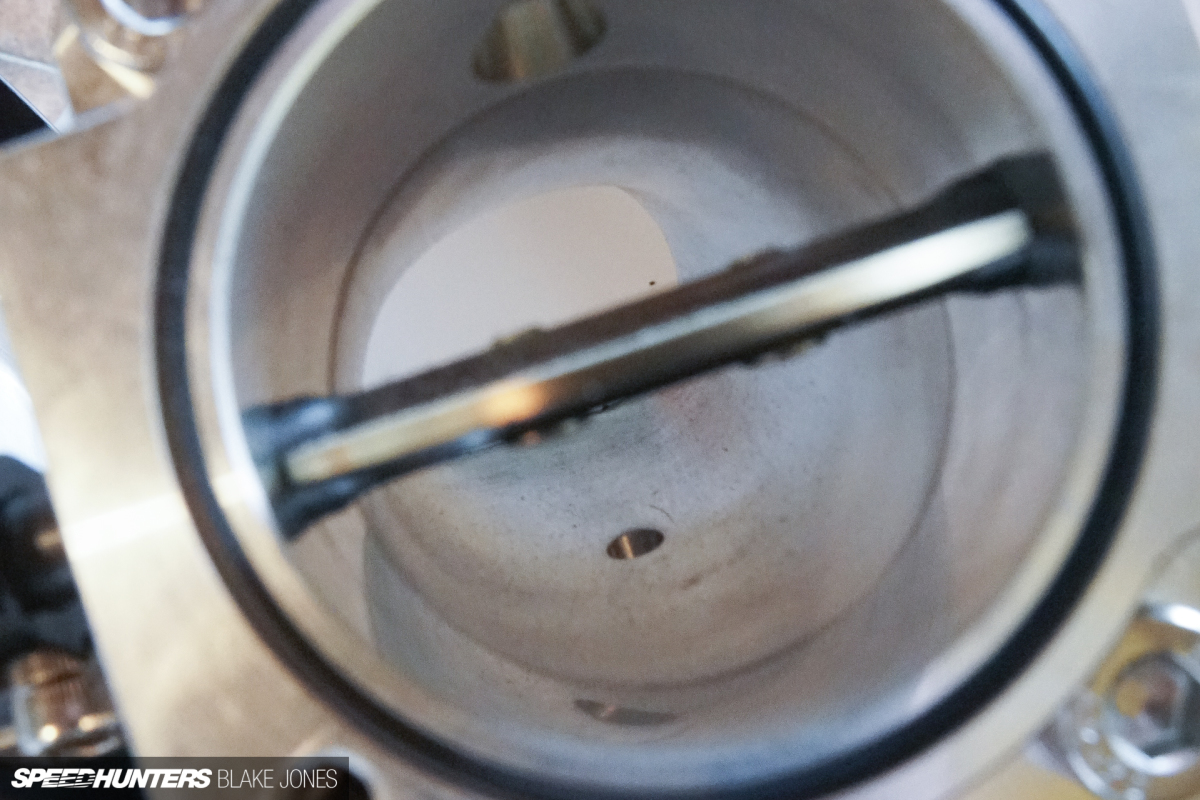
However having the design in my hand in billet aluminium after just a few brief weeks was an enormous thrill, and after months of tweaking in CAD, it lastly meant I might transfer in the direction of meeting of the complete system.
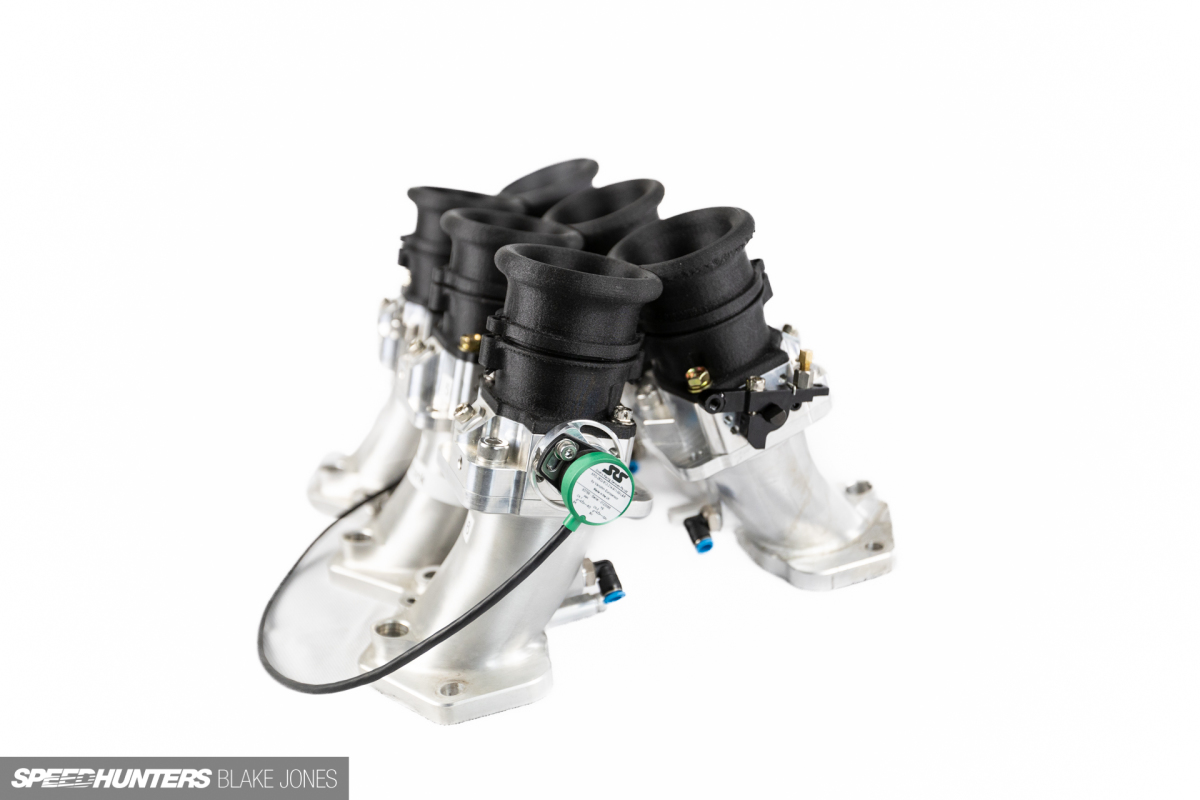
Connecting seamlessly to the highest of every runner is an RHD Engineering 48mm throttle physique.
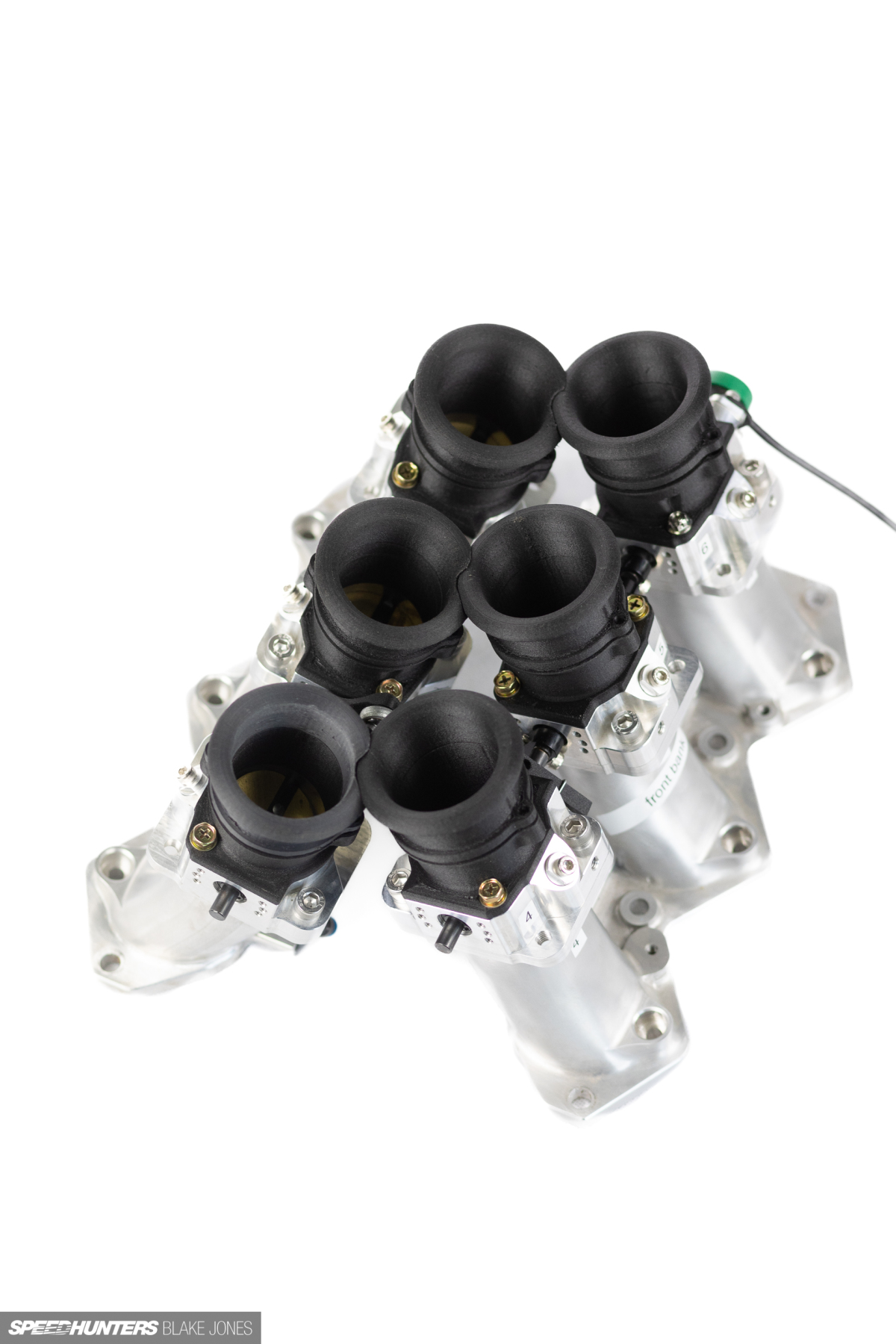
Throttle sizing is a key determination to be made early on when designing a multi-throttle system. Too large and you could lose throttle decision and, relying on the form of the general runner, air velocity. Too small and you’ll prohibit the utmost airflow at large open throttle. Though the calculated ‘optimum’ throttle dimension was fairly small, referencing a group of different NSX ITB implementations in addition to OE designs from the likes of Porsche and BMW urged that the 48mm ballpark would assist my goal energy output for this pretty normal engine, and permit margin for the impression of boundary layer results, throttle plate restrictions and many others., and a few headroom for future energy targets. The NSX has fairly giant ports from manufacturing facility, so going any smaller than 48mm would additionally create a ‘choked’ runner profile which might negatively impression velocity and cylinder filling. The prevailing choices for the NSX begin at 48mm and lengthen proper as much as a whopping 60mm, maybe optimised for engines with bigger capacities and better RPM capabilities.
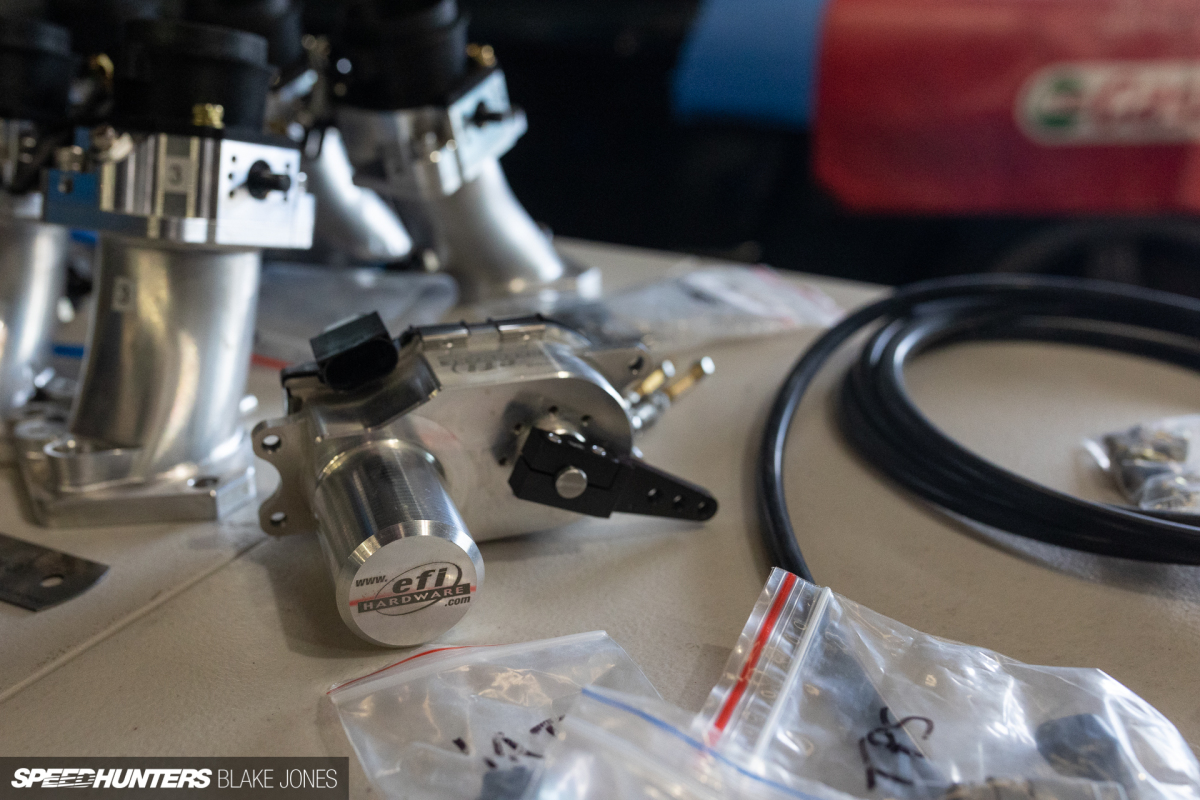
I’d beforehand tailored the automobile to run a (single) drive-by-wire throttle physique and was having fun with the advantages of adjustable throttle response and engine security methods. The EFI {Hardware} motor makes use of the identical ideas of an digital throttle physique, however actuates an adjustable lever which makes it adaptable to multi-throttle methods.
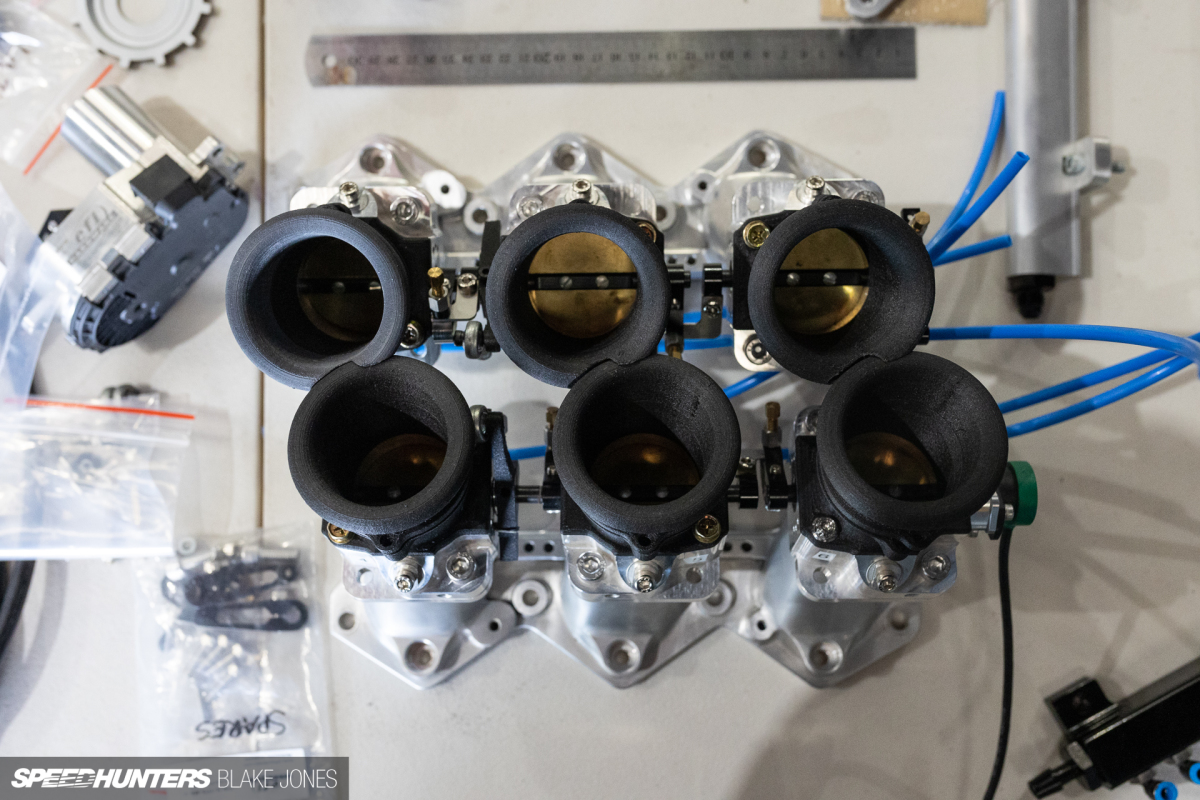
Some 3D-printed airbox mounts and bellmouths helped with mocking up the consumption earlier than ultimate meeting.
As soon as I’d assembled a lot of the parts to place the equipment collectively, it was time to make the lengthy journey from Melbourne to Newcastle, residence of 909 Motorsport. My day job at Bosch Motorsport has launched me to some distinctive motorsport minds, together with Ash and his workforce at 909. They had been the trusted arms required to finesse this ITB challenge to completion.
The common car servicing that occurs on the entrance of the store belies the magic that occurs on the again, the place a few lifts are reserved for motorsport tasks. Ash’s ardour for oddball European equipment means there may be all the time an attention-grabbing buyer automobile to stick your head into…
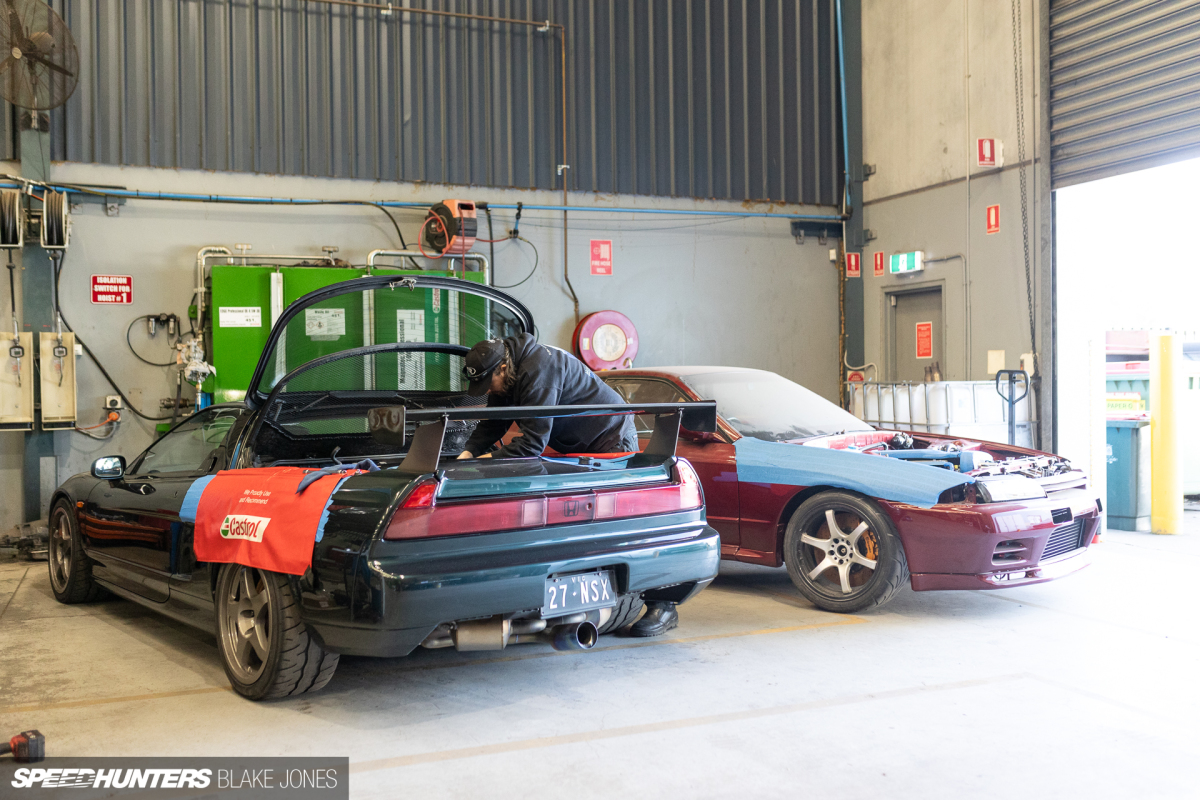
Whereas Ash caught his head into making the ITB magic occur.
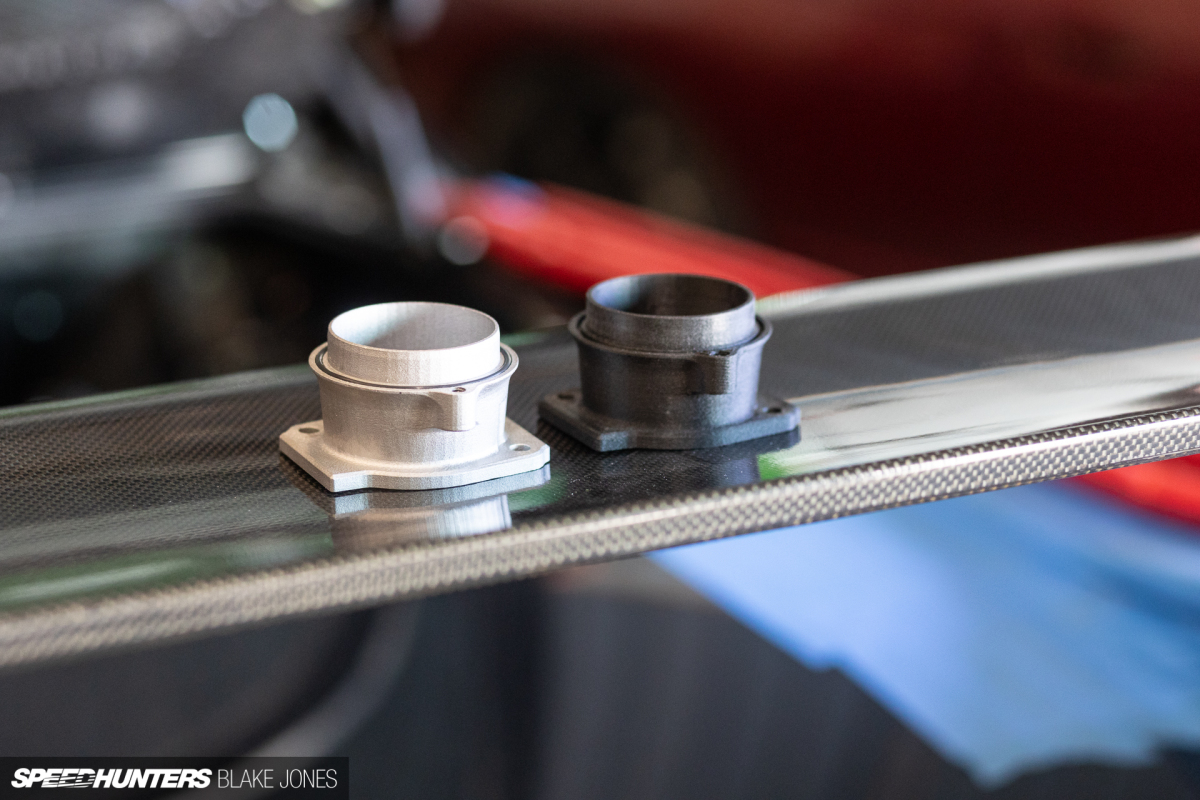
I made a decision the spacers which join the throttle physique to the airbox base had been good for an experiment in metallic 3D printing, electing to have them made out of aluminium. Being my first outsourced metallic print I used to be excited and curious to see the standard of the half.
General I used to be very impressed with what arrived from the printer, with the underside mounting floor being the one space that benefited from a resurfacing on the lathe on the expert hand of Eric of Apex Composites to get it fully flat.
Eric is a type of uncommon people who can all the time see a path to attain the target. A potent mixture of creativity and technical proficiency which I’m equal components envious and in awe of.
In a number of situations the place I had seemingly designed myself right into a tough nook, Eric fired up the (home-made) CNC and machined a sublime answer.
This included some extended-length throttle linkage arms which enabled a central pull of the 2 throttle banks from the throttle motor mounted within the central vee of the engine.
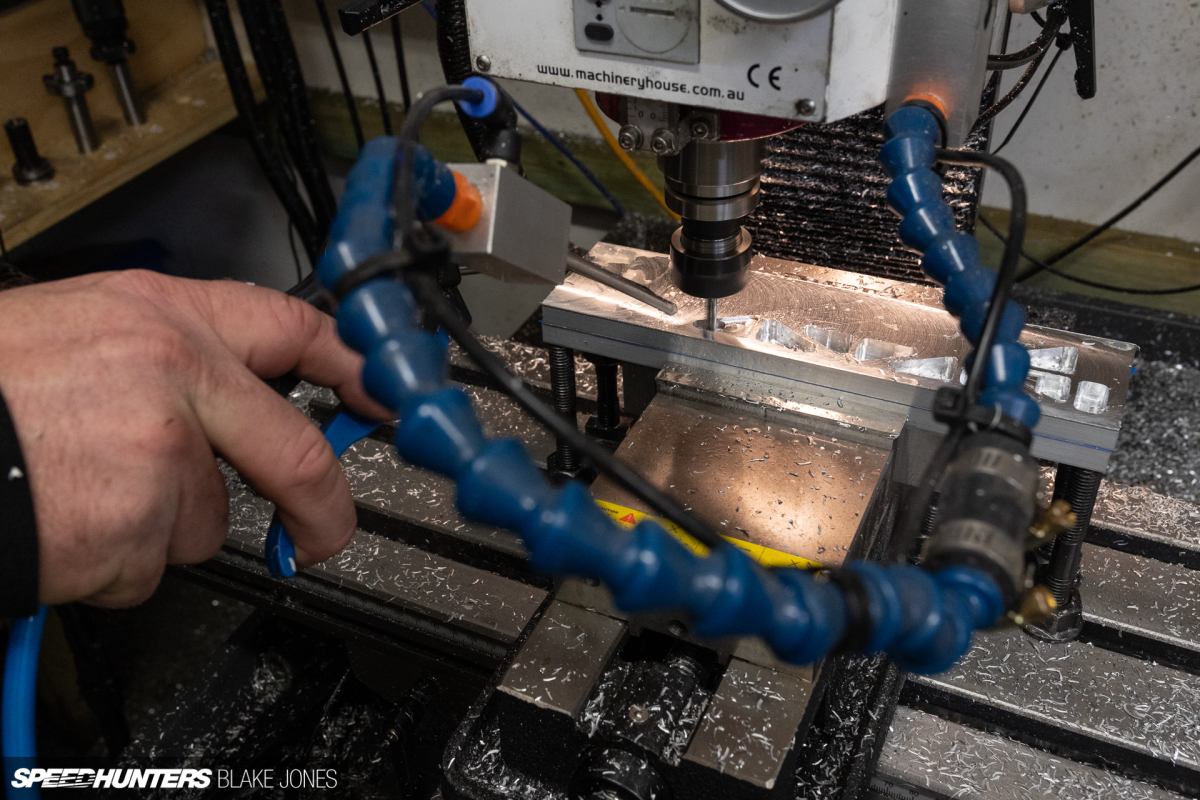
Additionally, a phenomenal bracket (pocketed to avoid wasting weight) to mount the vacuum manifold and equipment between the 2 banks.
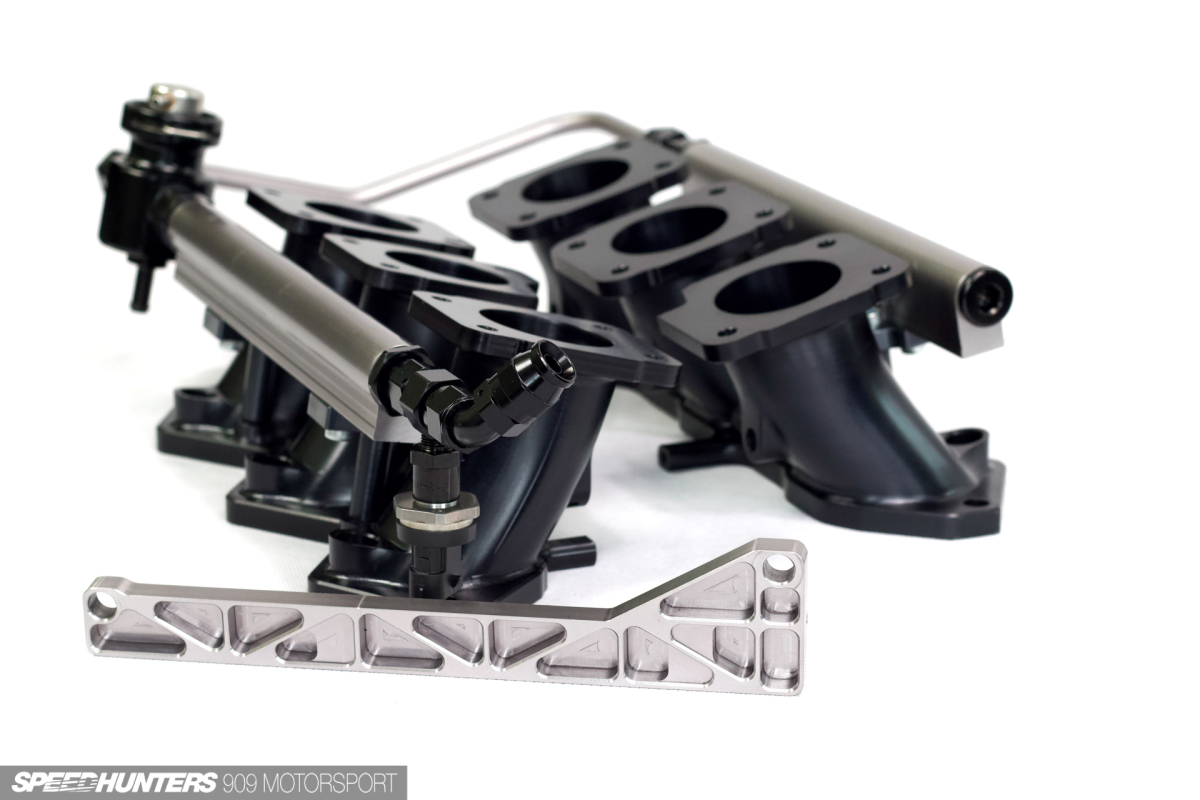
As soon as the fabrication of the varied aluminium parts was accomplished, Eric additionally handled them to an anodisation to enhance the sturdiness and corrosion resistance – to not point out the aesthetics. I used to be fairly giddy seeing the components like this for the primary time.
Customized gas rails with laborious strains bent to exactly match the vee of the consumption – does it get any higher? Touches like this I by no means would have been in a position to execute with out the involvement of Ash and Eric, and for that I’m extraordinarily grateful.

The method of truly mounting the manifold was prolonged, with plenty of take a look at becoming, adjusting, and aforementioned fabrication. Via this course of I used to be reminded of the distinction between designing components like this and truly engineering them to work with the required stage of efficiency and sturdiness, and the significance of getting specialists in your nook.
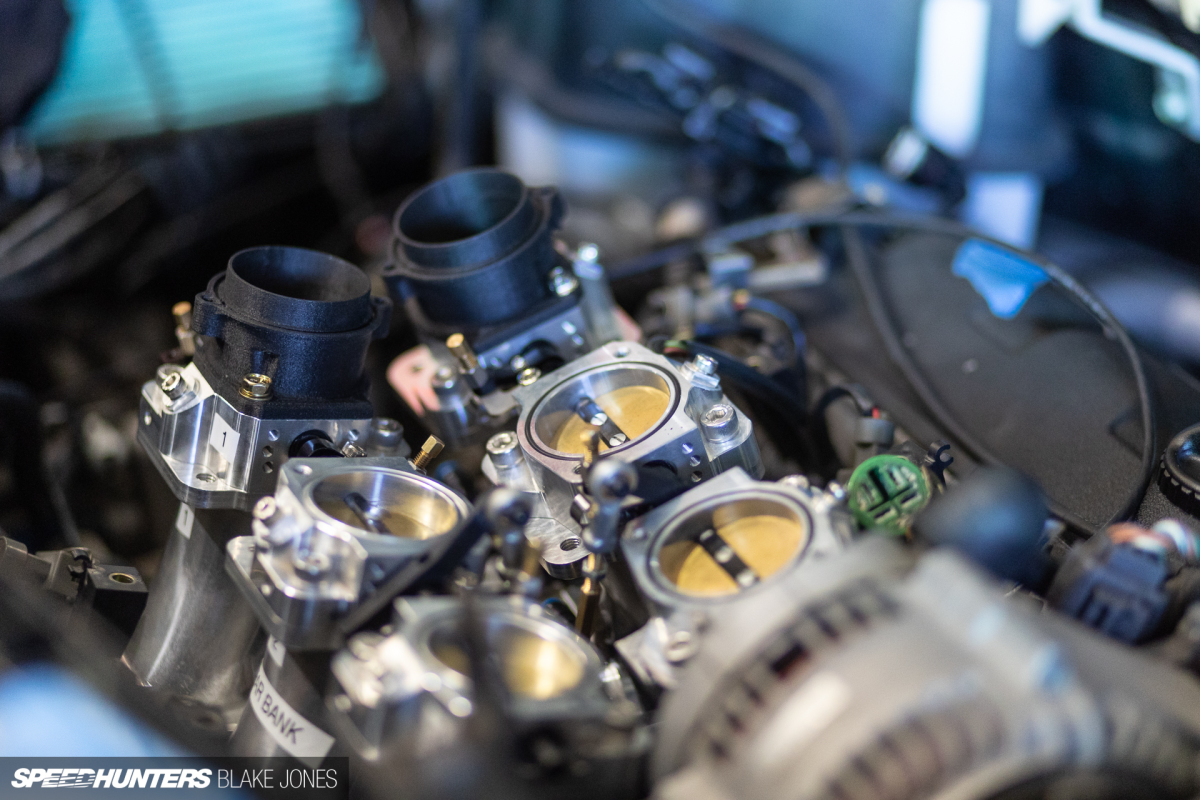
One of many key selections that Ash and Eric drove was to grub-screw each level of adjustment within the system as soon as it was completely arrange. This can be a important machining effort that requires talent and endurance, which Eric (maybe apparent to the readers at this level) has in buckets. A standard grievance about multi throttle linkages is that they arrive out of alignment with time, requiring fixed fiddling – not an issue anymore.
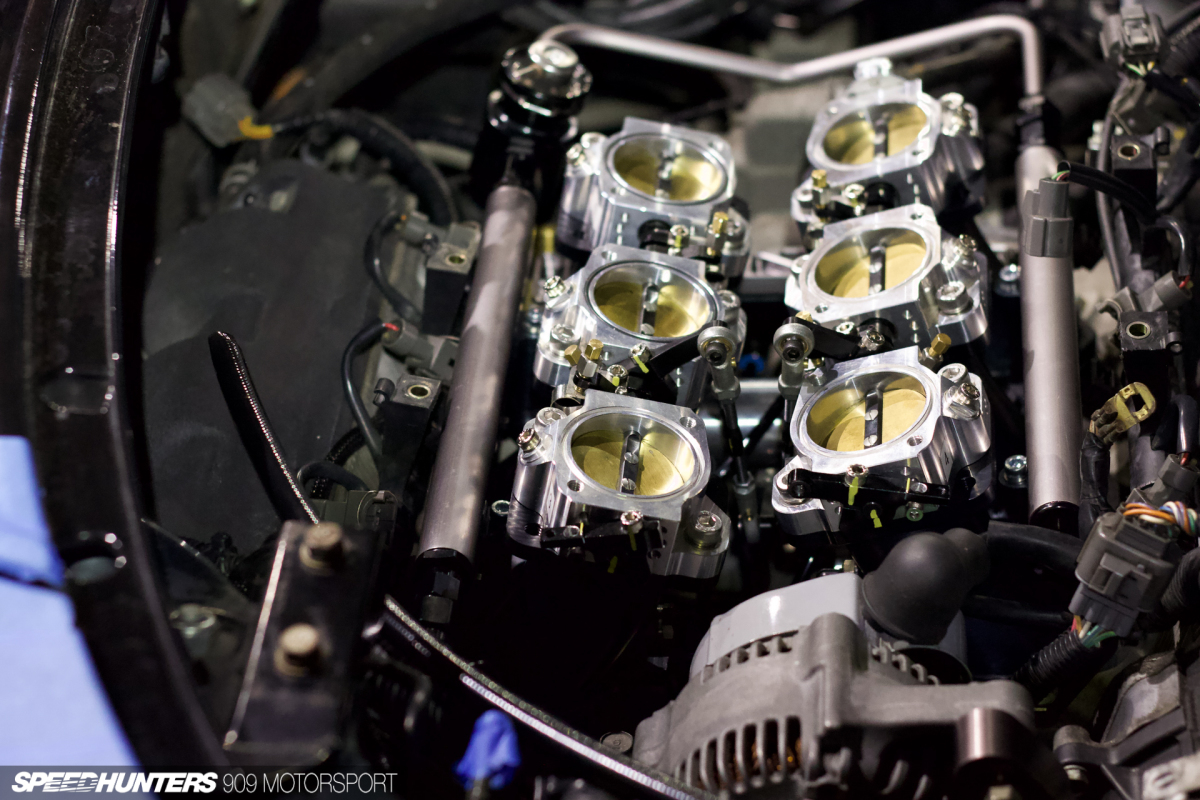
Mocked up on the automobile, I used to be lastly beginning to see the fact of the dream materialise. We had been nonetheless miles away from the automobile operating, however Ash knew what we would have liked for motivation – he rapidly attached the throttle motor and despatched it the command – open! Seeing the six throttles dance in unison was truthfully a little bit of an emotional second – after a whole lot of mixed hours of planning and tinkering this insanity really may work.
Manufacture To Meeting
One of many foremost compromises of a multi-throttle setup is the lack of manifold quantity downstream of the throttles. On a typical single-throttle setup, the manifold usefully holds a balanced supply of vacuum from all cylinders, which supplies a MAP (manifold air strain) sign and constant vacuum to feed brake booster, gas strain regulator reference, and many others. The everyday answer is to hyperlink the cylinders under the throttles to a smaller manifold, which is strictly what I did, utilizing nylon Festo tube and top quality fittings to feed an inexpensive eight-port manifold.

That is additionally the place I built-in an electrical idle valve. The drive-by-wire might, in idea, management the idle, nonetheless Ash’s expertise confirmed that the decision required for the exact idle management that might allow the uncompromised drivability wouldn’t be potential with that central motor alone.
The explanation for that is the extraordinarily non-linear relationship between throttle place and airflow as a throttle cracks open – multiply this by six openings and the massive inrush of air at even 1% throttle turns into unattainable to handle to the excessive normal we had been pursuing. A easy two-wire Bosch idle motor was a straightforward answer, built-in to take air from the filtered air field – with essentially the most elegant machined aluminium adapter made by Eric.
Into the identical aluminium vacuum block was the place we put in one in every of two air strain (MAP) sensors. A Bosch Motorsport quick response air temp sensor neatly integrates into the air field with one other piece of Eric’s useful jewelry.
We have now elected to not use the inner throttle place sensor within the throttle motor, as an alternative utilizing a Variohm TPS on every financial institution of the consumption to generate a throttle place sign. This may appear to be pointless complexity however is strictly the form of determination that Ash will push you make regardless of it that means extra effort and time within the setup. Basically, you need the ECU to know the place of the throttle blades, not the place of the motor driving them. In a multi-throttle system with a mixture of assorted connections, linkages and joints, any slack within the system (and there may be all the time some) turns into noise within the sign. Utilizing the Alpha-N plus MAP load tuning methodology as we’re right here has TPS as a key enter, so accuracy is of utmost significance.
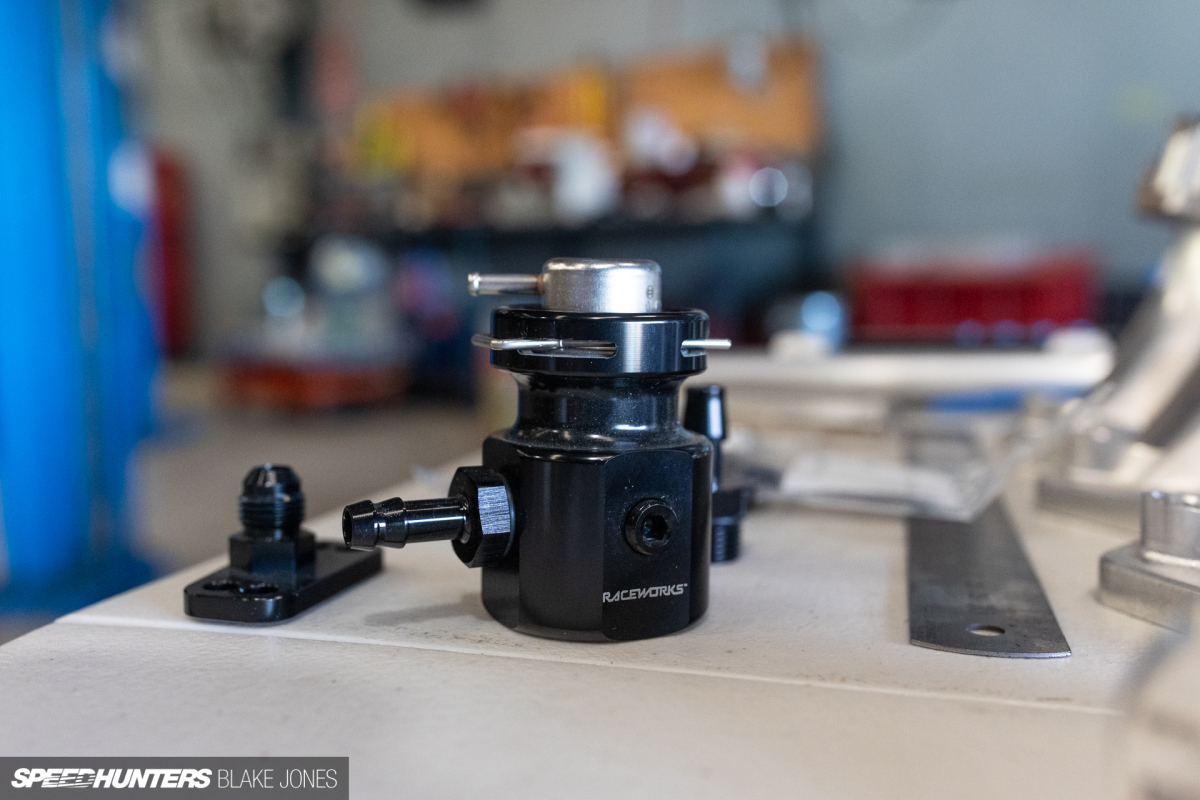
The gas strain regulator is a – you guessed it – Bosch 3bar DR2 regulator in a Raceworks billet housing. These ‘pot sort’ regulators are reasonably priced and rather more dependable than an aftermarket adjustable regulator.
I had deliberately designed the manifold with an offset – a curved runner – to create clearance to the manufacturing facility alternator and bracket, which encroaches into the motor’s vee. The manifolds, throttles and different {hardware} cleared superb, however the airbox fouled – resulting from an surprising inner element, I couldn’t get the massive field far sufficient throughout.
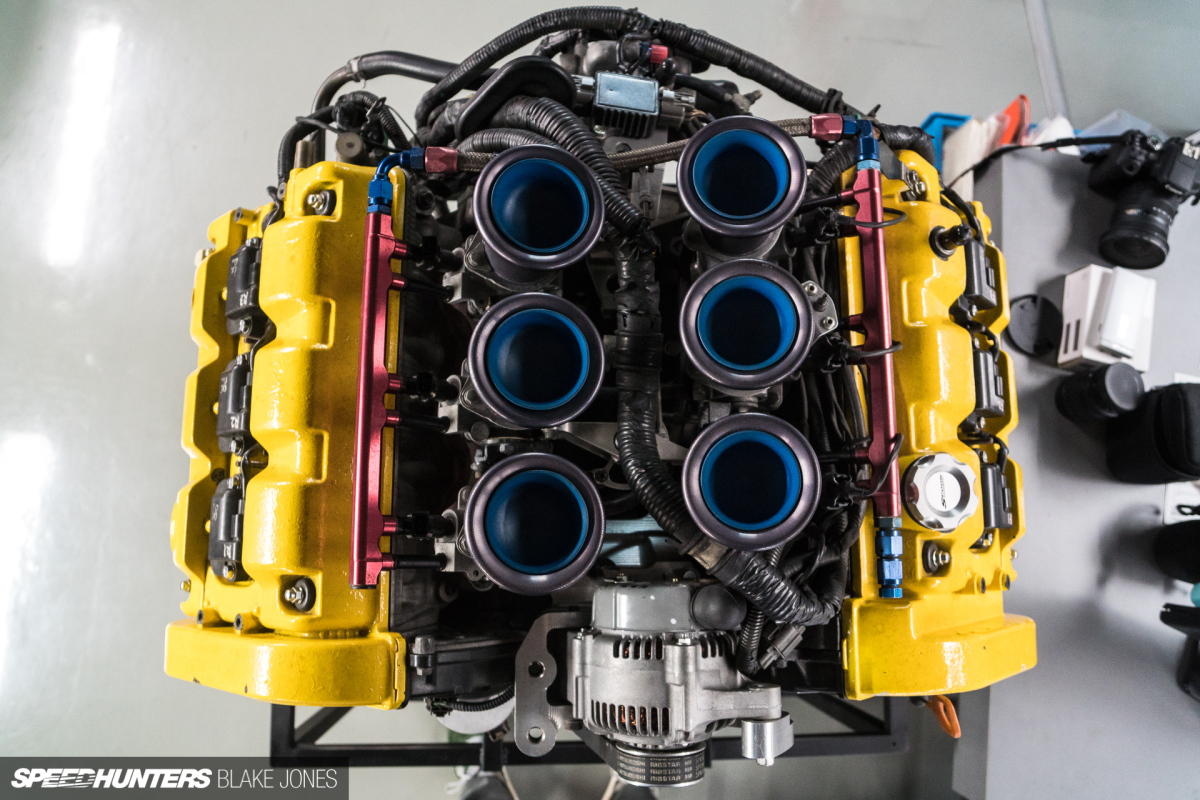
Fortunately, we had been in a position to flip an impediment into a possibility. Spoon famously developed and raced an ITB-equipped NSX in interval, and had helpfully solved my downside all these years in the past. The Spoon light-weight alternator bracket is milled from an enormous block of billet, sustaining the required stiffness and manufacturing facility engine mount level however dropping a helpful chunk of weight from the highest of the engine.

I strive to not fanboy for any model an excessive amount of however permit an exception for Spoon Sports activities – one in every of my fondest recollections of the NSX is Ichishima-san doing a take a look at drive and validation after the Spoon Inflexible Collars and steering wheel had been put in at Sort One again in 2017.
An on the spot saving of a welcome 5.4kg (11.9lbs) relative to the manufacturing facility metal bracket.
I caught up with Spoon’s former head of improvement, Jomoto-san, at WTAC final 12 months, and he gave me a bit of information on these specific components. They had been by no means launched by Spoon for buyer automobiles, however the machinist who produced the components was permitted to do a small run for some buyer requests. Undoubtedly, this half has been via just a few totally different automobiles earlier than ending up in Challenge NSX.
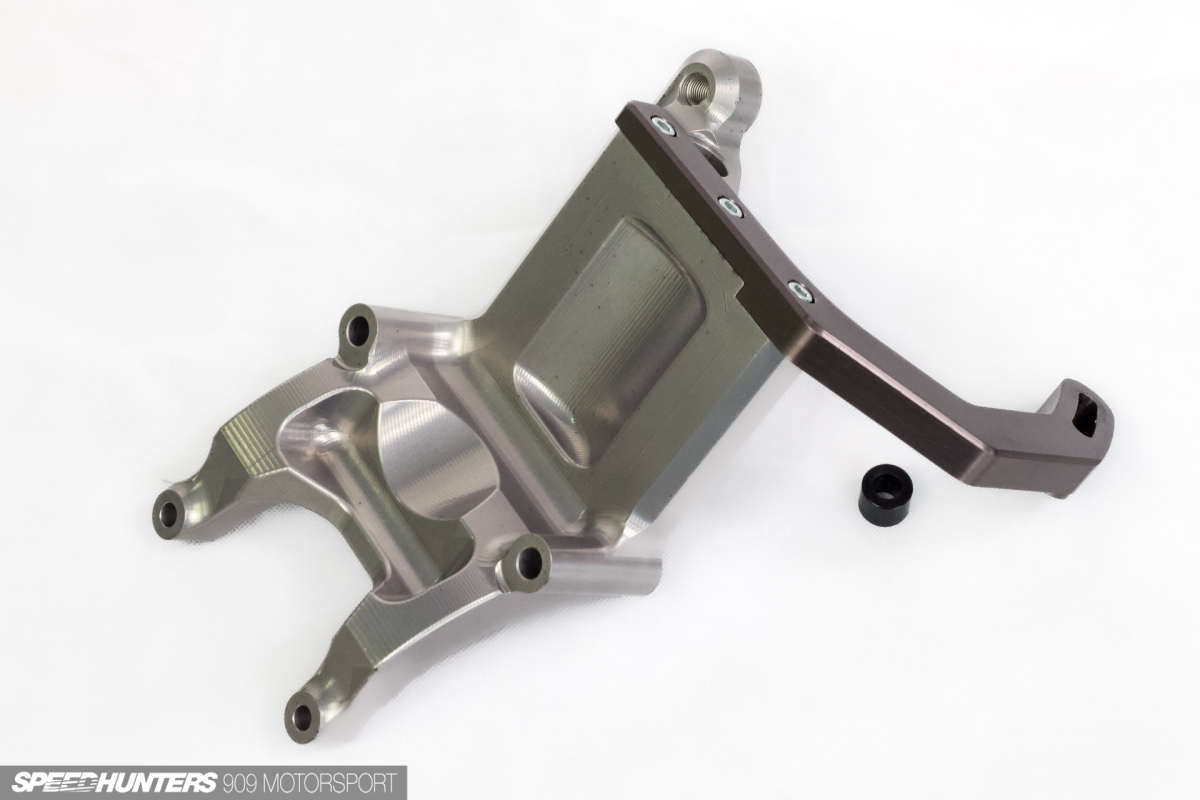
Eric utilized a protecting anodisation within the titanium color seen all through the system, which has elevated the looks of the already elegant design even additional.
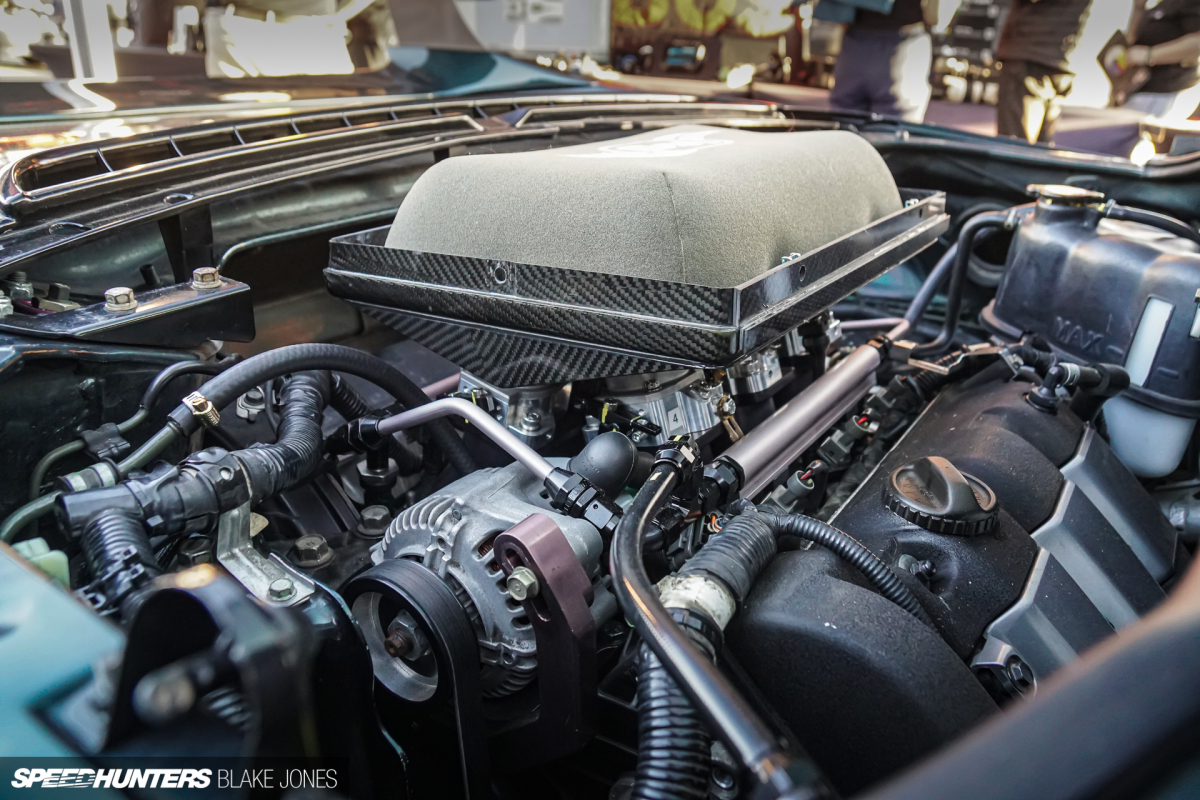
Being a race-focused element, the alternator is at the moment under-driven for highway automobile functions and we’re seeing low battery voltage underneath sure circumstances, so some testing with a smaller pulley might be required.
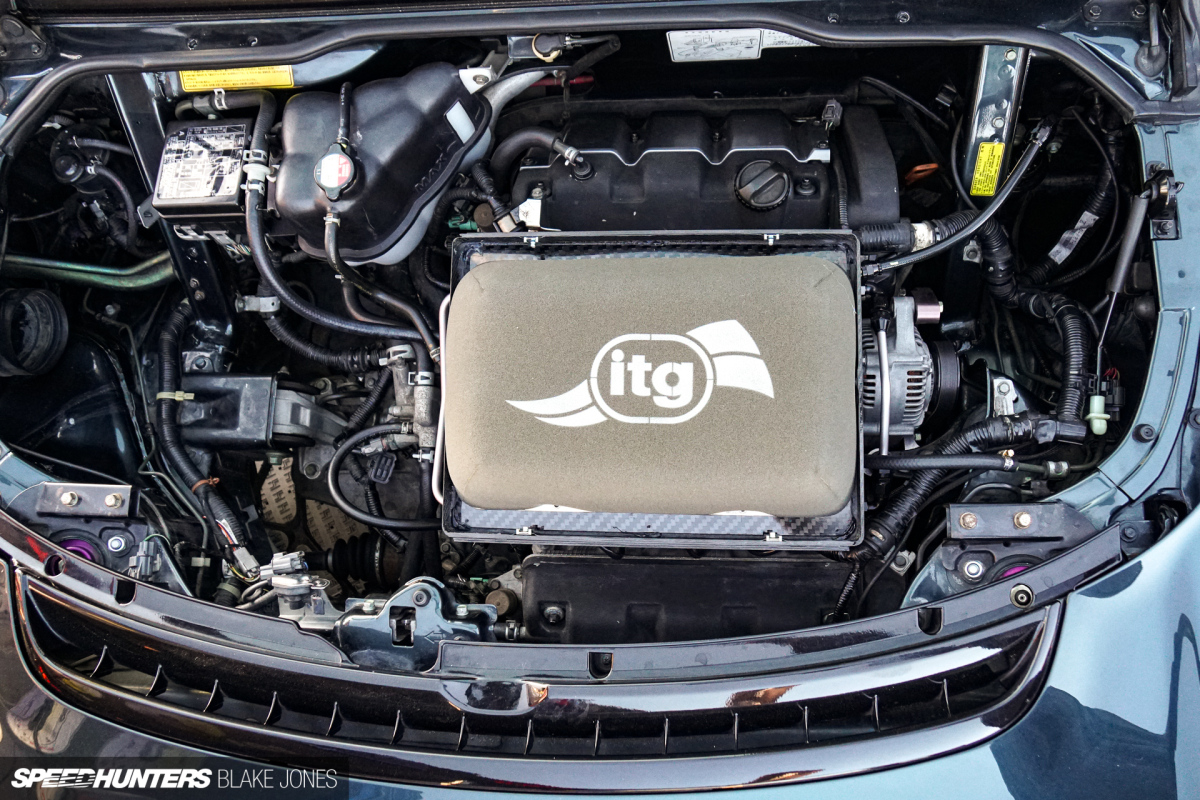
The airbox itself is a semi-custom unit from Reverie within the UK, housing a big ITG foam filter component.
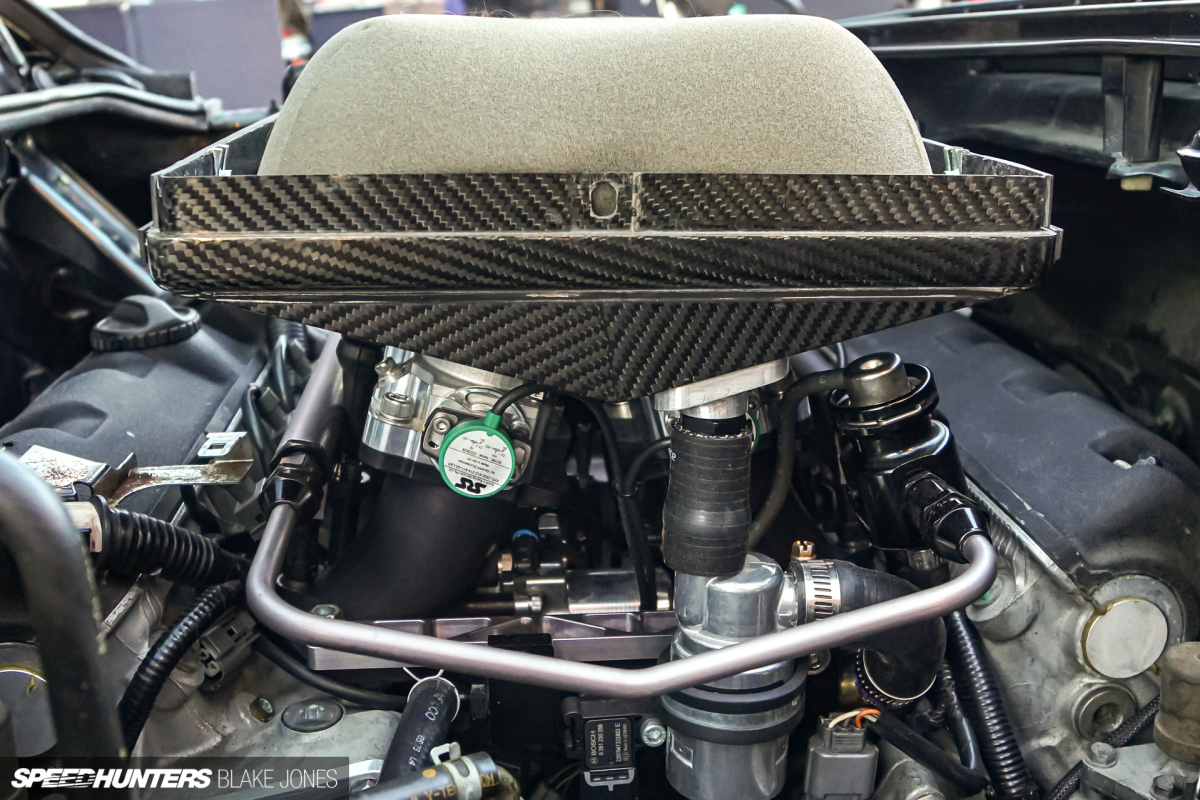
The vee-shaped base needed to precisely match the incline of the runners, which it did. This was eye-wateringly costly however is as gentle as a feather, appears nice and with its inherent resonance properties ought to sound mega too.
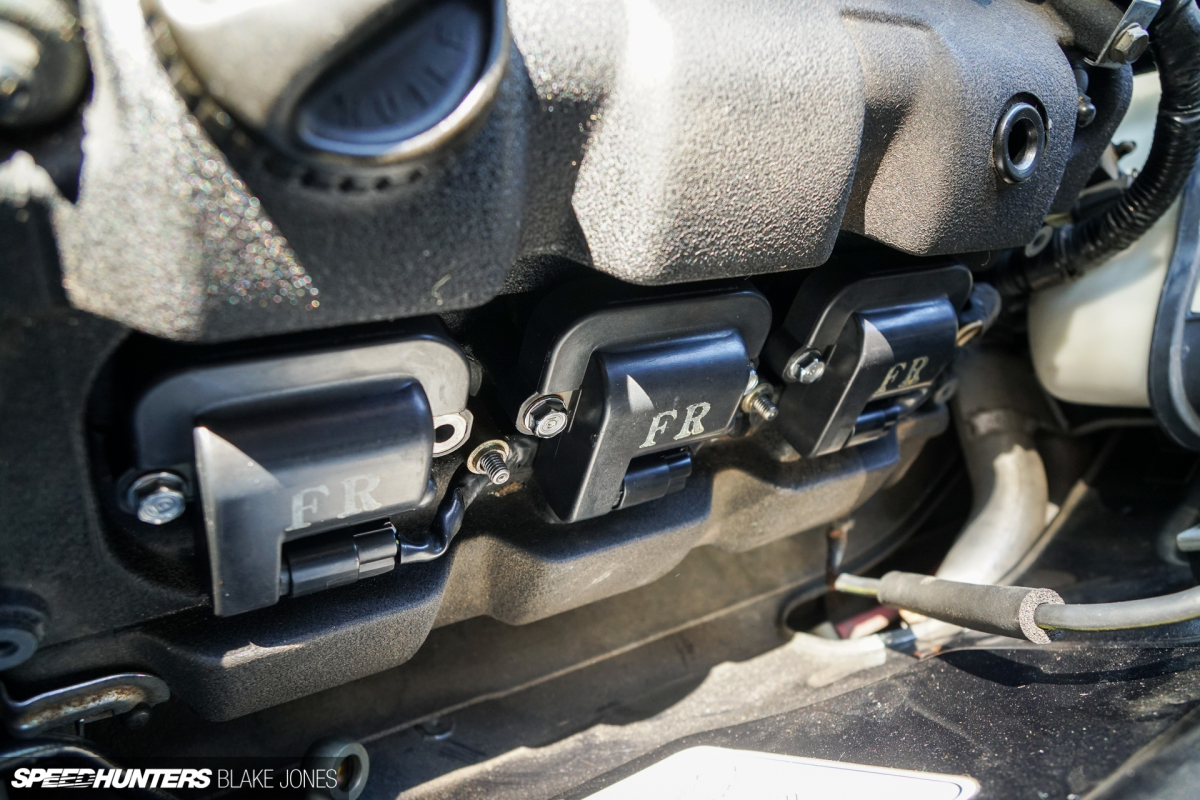
One other small change – swapping out the usual coil packs for one thing extra trendy.
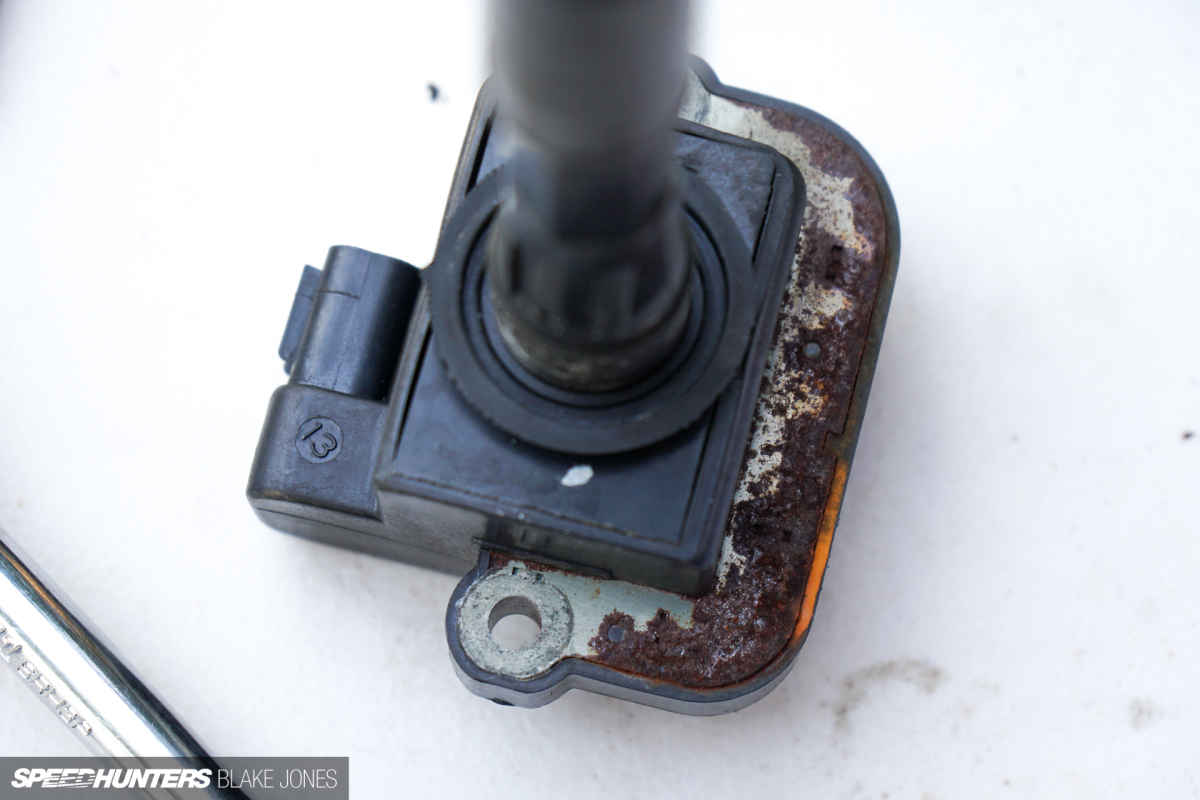
The coils on the NSX’s rear financial institution are identified for deteriorating resulting from publicity to moisture – exhibit A, your honour.
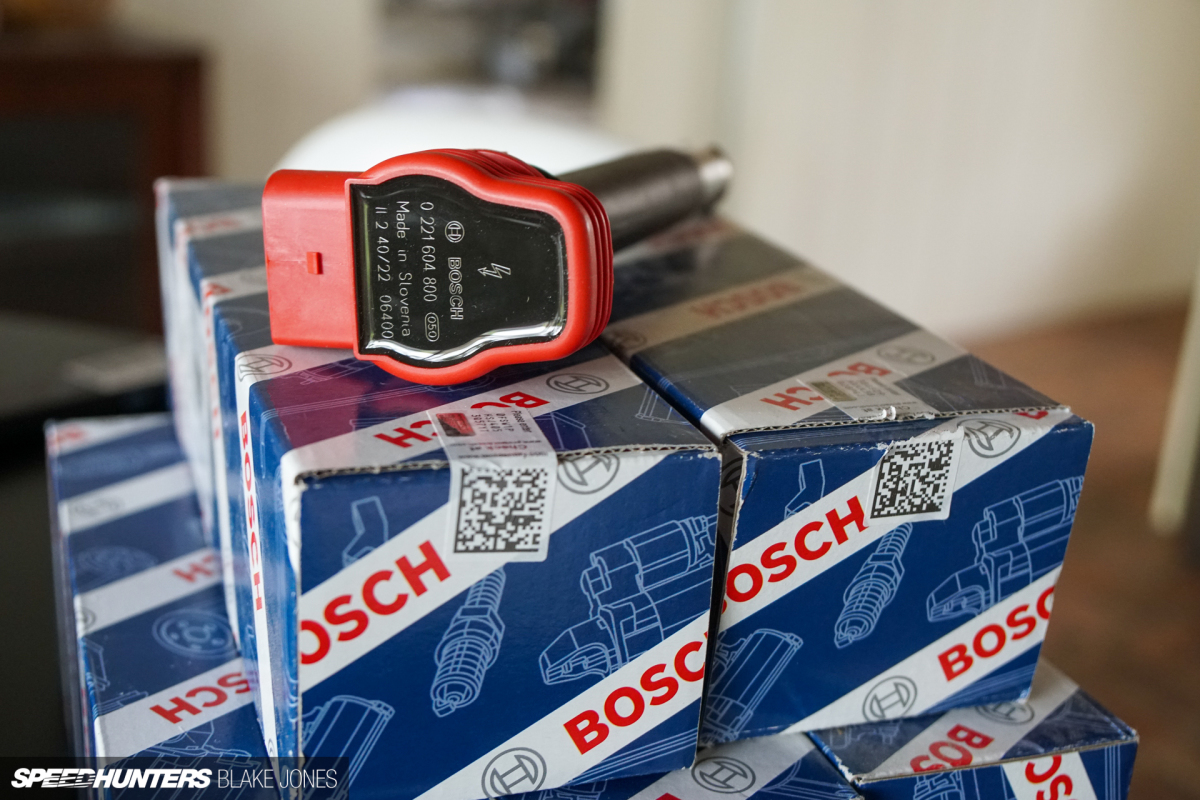
I once more reached into the Bosch catalogue for the ‘R8′ ignition coil – a light-weight and reasonably priced OE possibility that additionally comes with a flowery pink prime – so it have to be sooner.
I have to admit to being a bit lax with the scales recently, however I did handle to weigh the outdated and new. Throughout six cylinders, that’s over 1.3kg (2.8lbs) of coil weight saved.
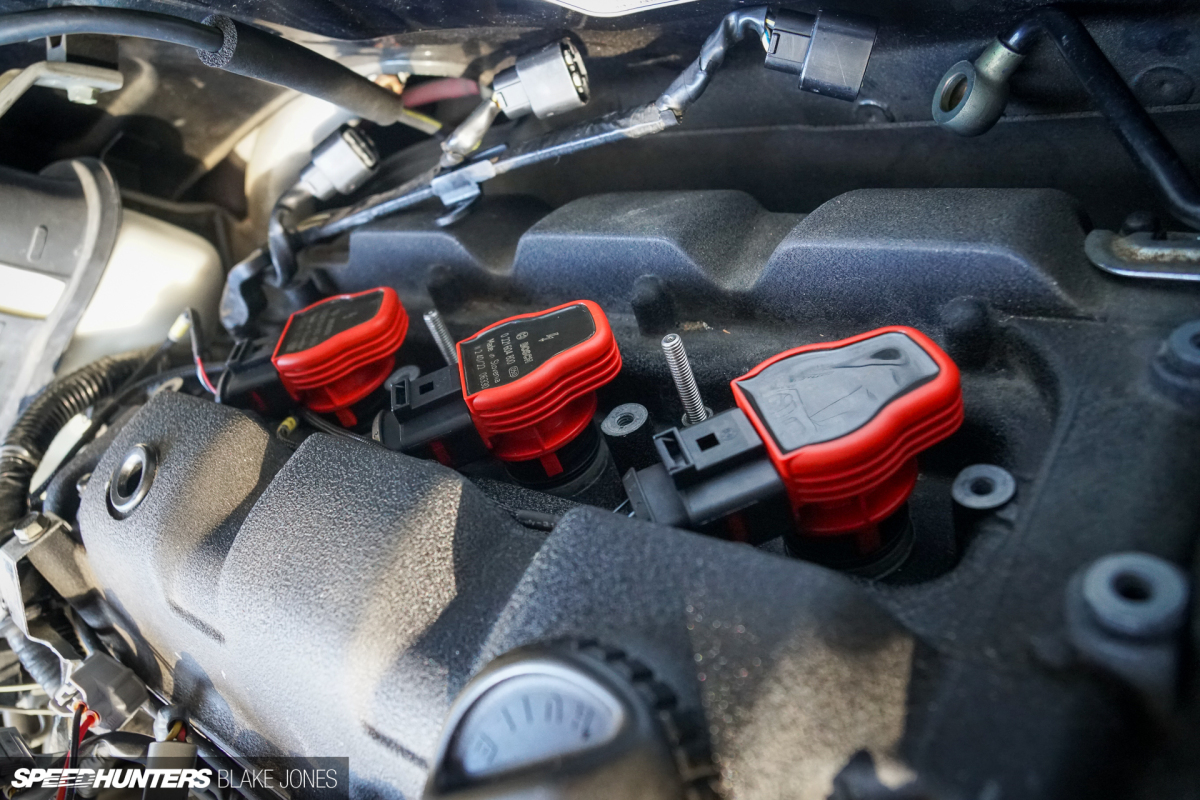
I’m not anticipating a efficiency profit right here, this engine continues to be pretty inventory with out excessive compression nor increase. However cash and weight saved with a future-proof answer, so I’m happy.
Meeting To Calibration
So in any case that onerous work, absolutely it’s the time to disclose that the automobile made extra energy and torque and is the quickest NSX within the Southern Hemisphere? Nicely, as you could now suspect, it’s not that straightforward.
We put the automobile on the dyno with a spotlight first on getting the automobile operating and driving like inventory. There’s nonetheless auxiliary work to be achieved earlier than this new setup can stretch its legs correctly – Ash may be very specific about what he requires from a car earlier than he chases outright energy. Nevertheless, I did persuade him to do an influence run that we might evaluate to baseline – I knew you guys would homicide me if we didn’t have one!
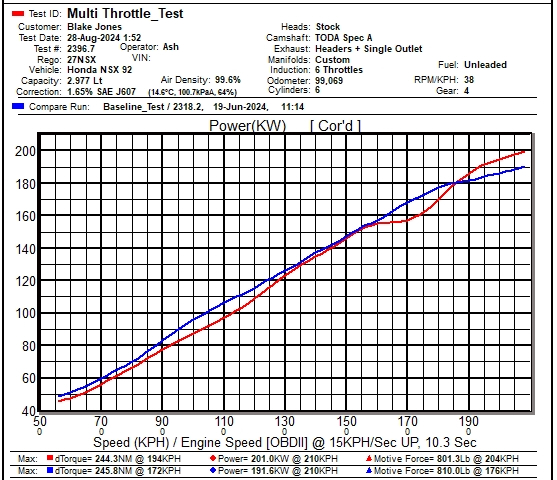
With the brief prototype bell-mouths (seen earlier within the story when the consumption was mocked up) the headline determine is now 201wkW (269whp) – a 9.4kW (12.8hp) enchancment over the baseline set prior (191wkW/256whp). I used to be anticipating a ten to 15kW (13 to 20hp) improve from the ITBs and there may be nonetheless important optimisation to implement – so straight off the bat that may be a respectable enchancment to the highest finish. Nevertheless, that may be a peak energy determine, and the engine has clearly misplaced each energy and torque at different RPM.

Outdoors of the fanatic recreation, particular person throttle our bodies are virtually all the time thought of to be race automobile components, and this end result is an efficient instance of why. Race automobiles are pushed within the slender band of their rev vary that makes essentially the most energy, and barely, if ever, have to dip out of that vary. Street automobiles, however, must be usable over a a lot wider vary, so the driving force has entry to torque upon request, no matter what RPM the engine could also be cruising at. The manufacturing facility variable consumption was distinctive for that goal. Its variable geometry (which switched from small to giant quantity at 4,800rpm) neatly explains the brand new gap in torque as much as 5,000rpm, most pronounced round 4,000rpm. The opposite dip at 6,800rpm is uncommon and would require additional investigation once we do some testing with the ultimate consumption {hardware} together with trumpets of various lengths and airbox lid and optimising the VTEC engagement level.
So the place does that put us relative to our ‘Stage 2′ goal of a pleasant spherical 300 crank hp? Some fast maths…
Manufacturing facility manifold = 191.6rwkW + 27.3kW (measured drivetrain loss) = 218.9kW/293.5 crank hp
Multi-throttles = 201rwkW + 27.3kW = 228.3kW/306.2 crank hp
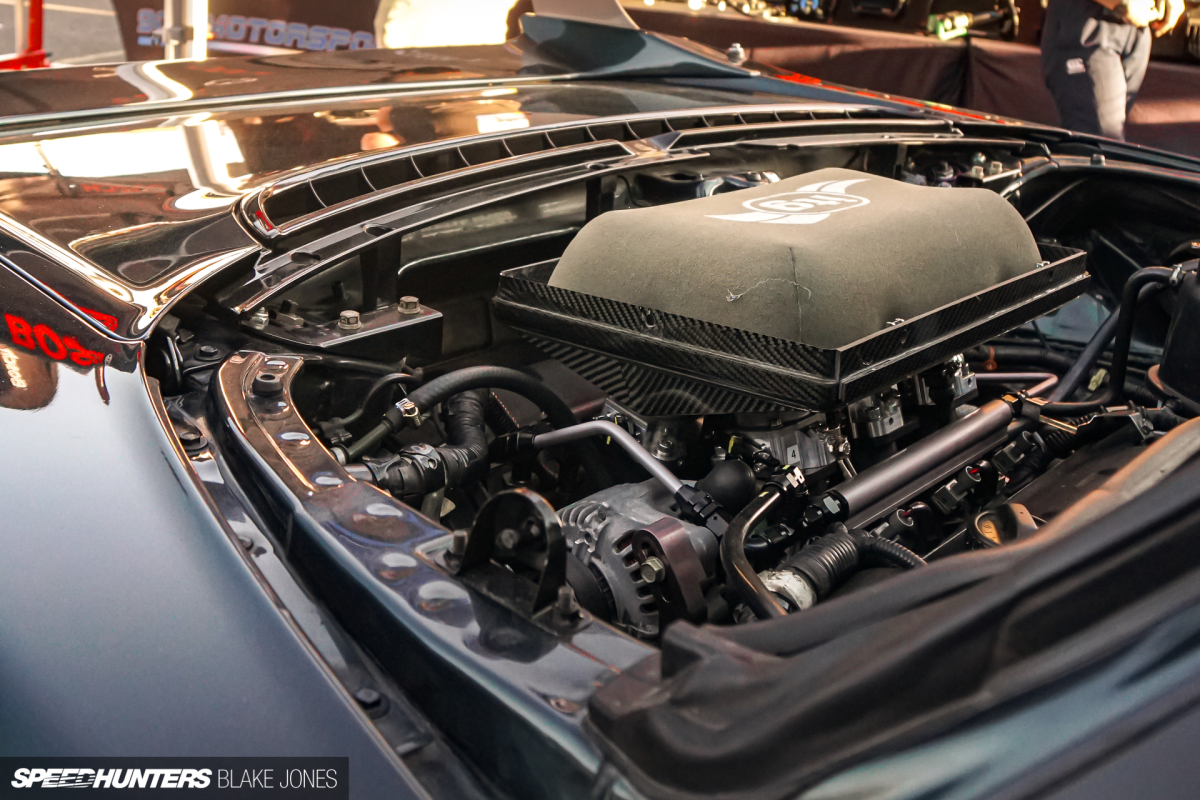
…I’m happy to name that mission success for ‘Stage 2′, which was initially benchmarked towards the 987.2 Cayman S on a simplistic power-to-weight foundation. We’ve even snuck previous the 100hp-per-litre threshold, which is nice for an NA engine. Nevertheless, it’s positively not job achieved with some energy and torque to be recovered at decrease RPM, and even perhaps extra to come back from the highest finish with the suitable supporting modifications. I’m estimating weight discount to be round 11kg (24lbs), however at the moment with out the precise measurements to substantiate.
Nevertheless the main win shouldn’t be measured in tq/hp, however in smiles. After all, it sounds superb. An intoxicating crescendo that builds to the VTEC crossover, then completely screams to redline. Don’t imagine me?
What might notably impress with these of you who’ve gone down the ITB path already is that the top result’s an NSX with fully uncompromised highway manners. At wise RPM it genuinely drives like a inventory automobile. It begins first bang of the important thing whatever the climate. The idle is ready at 900rpm! We are able to chase down the facility and torque however proper now having a automobile that’s genuinely drivable with a drive-by-wire, vee-configuration ITB setup is one thing I’m extremely happy with.

A large thanks to Ash from 909 Motorsport and Eric from Apex Composites for the trouble, abilities and motivation they offered all through this challenge. With out these guys, I could have by some miracle managed to get ITB system put in on the automobile however I by no means would have one thing that’s so sturdy, fantastically completed and dependable as what we now have. Additionally a particular because of Rama from RHD engineering, for answering six million questions and getting me the additional bits I wanted to get the challenge throughout the road. A shoutout additionally to Tim McLean of TMC Developments for the educated enter in the course of the design course of.
Blake Jones
Instagram: blaketjones
blake@speedhunters.com


